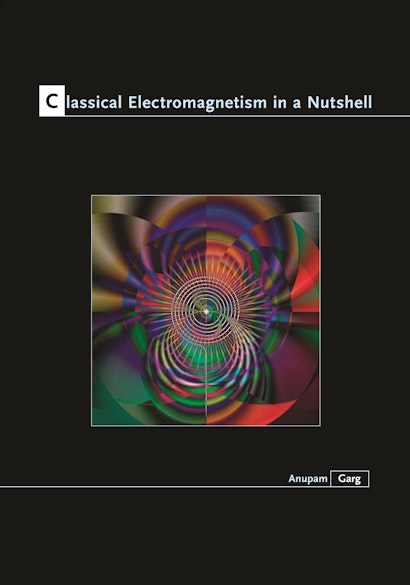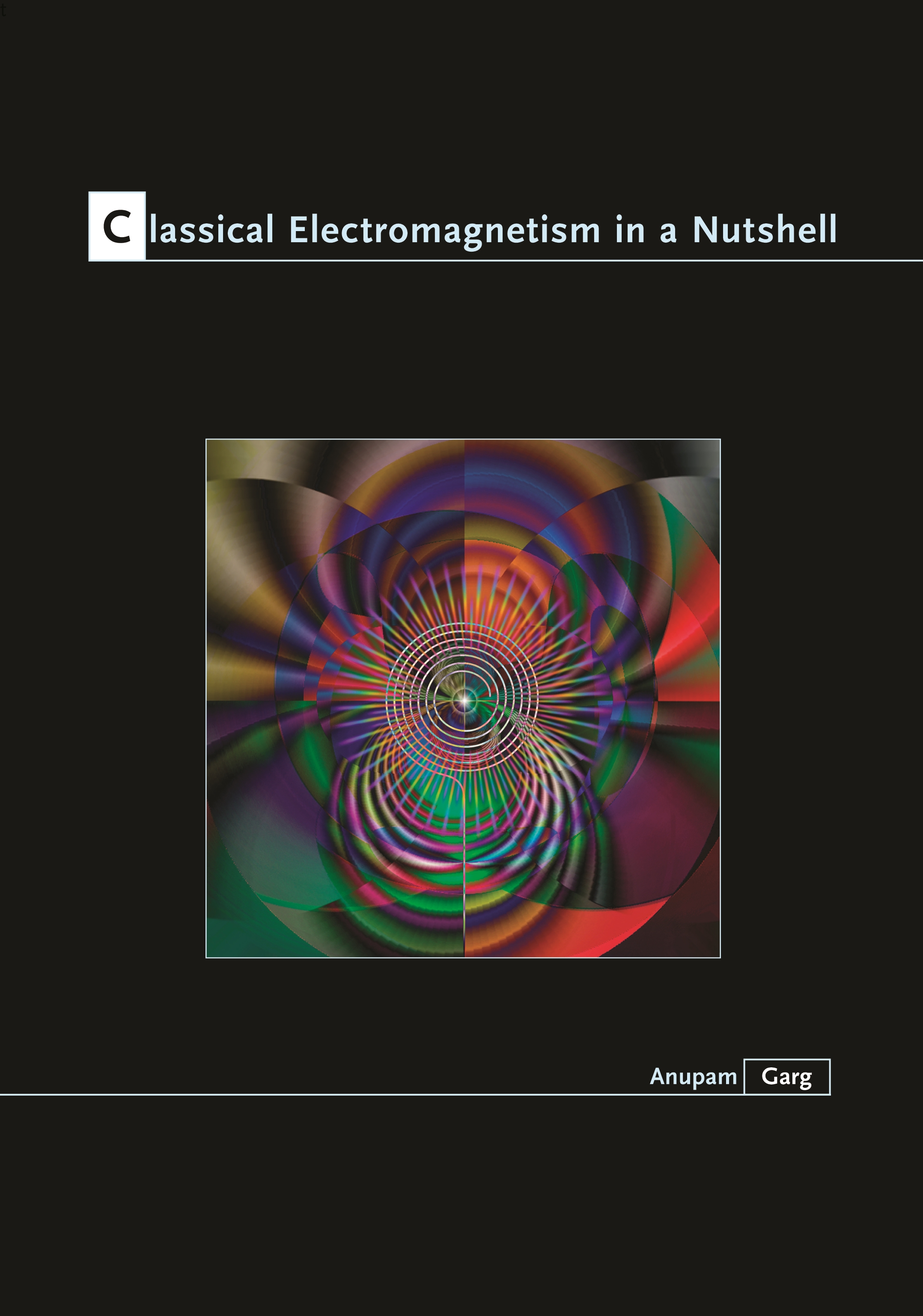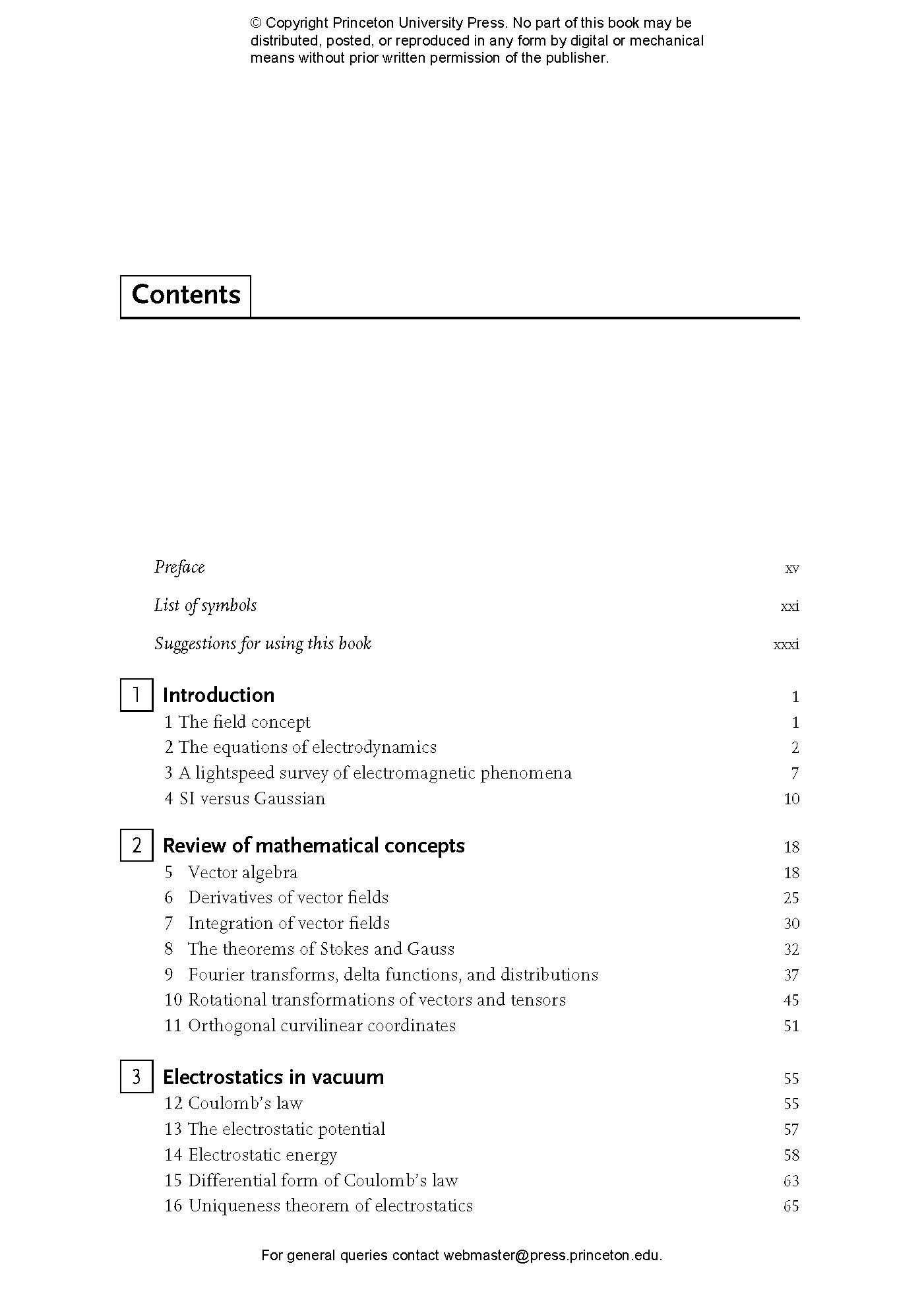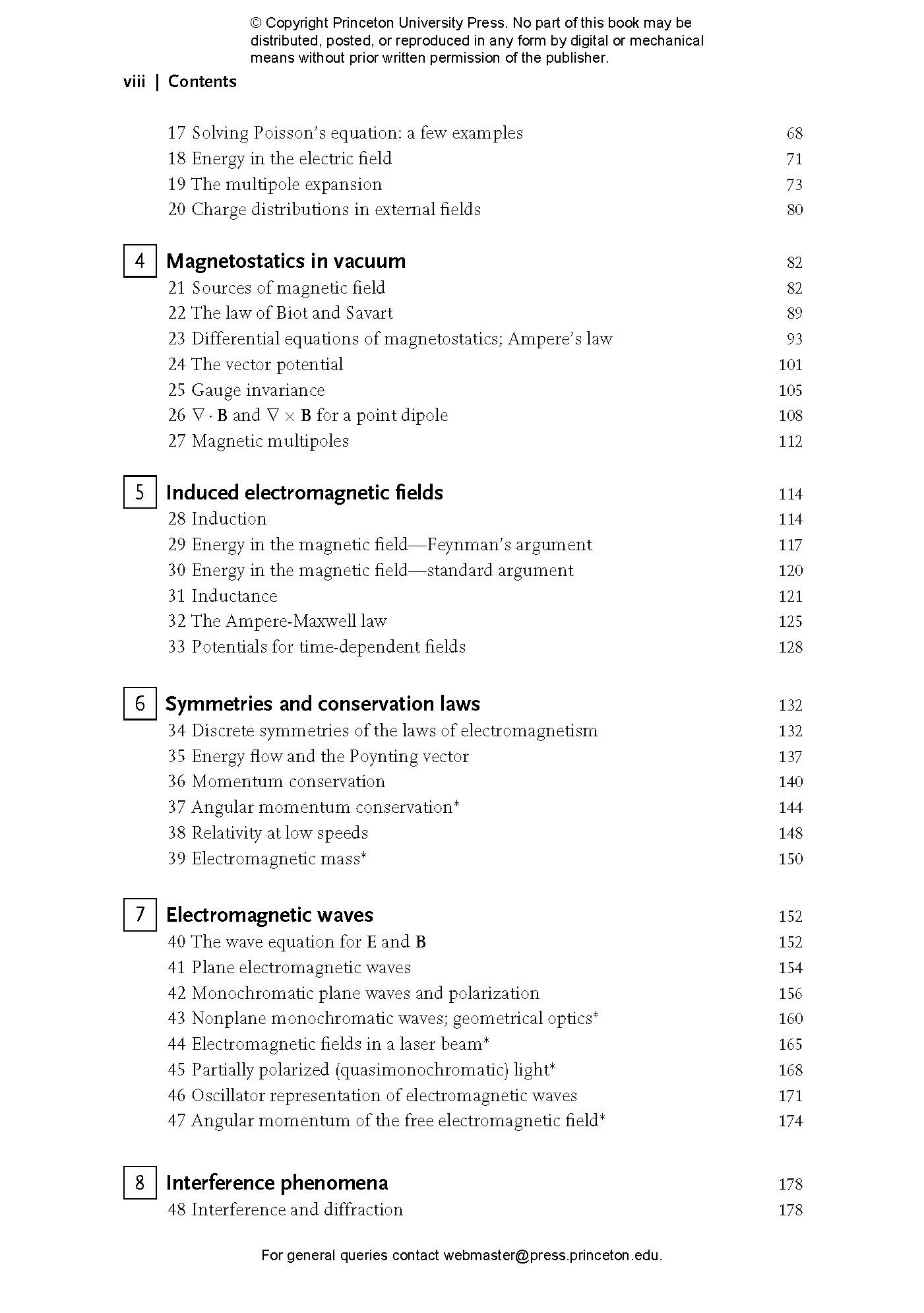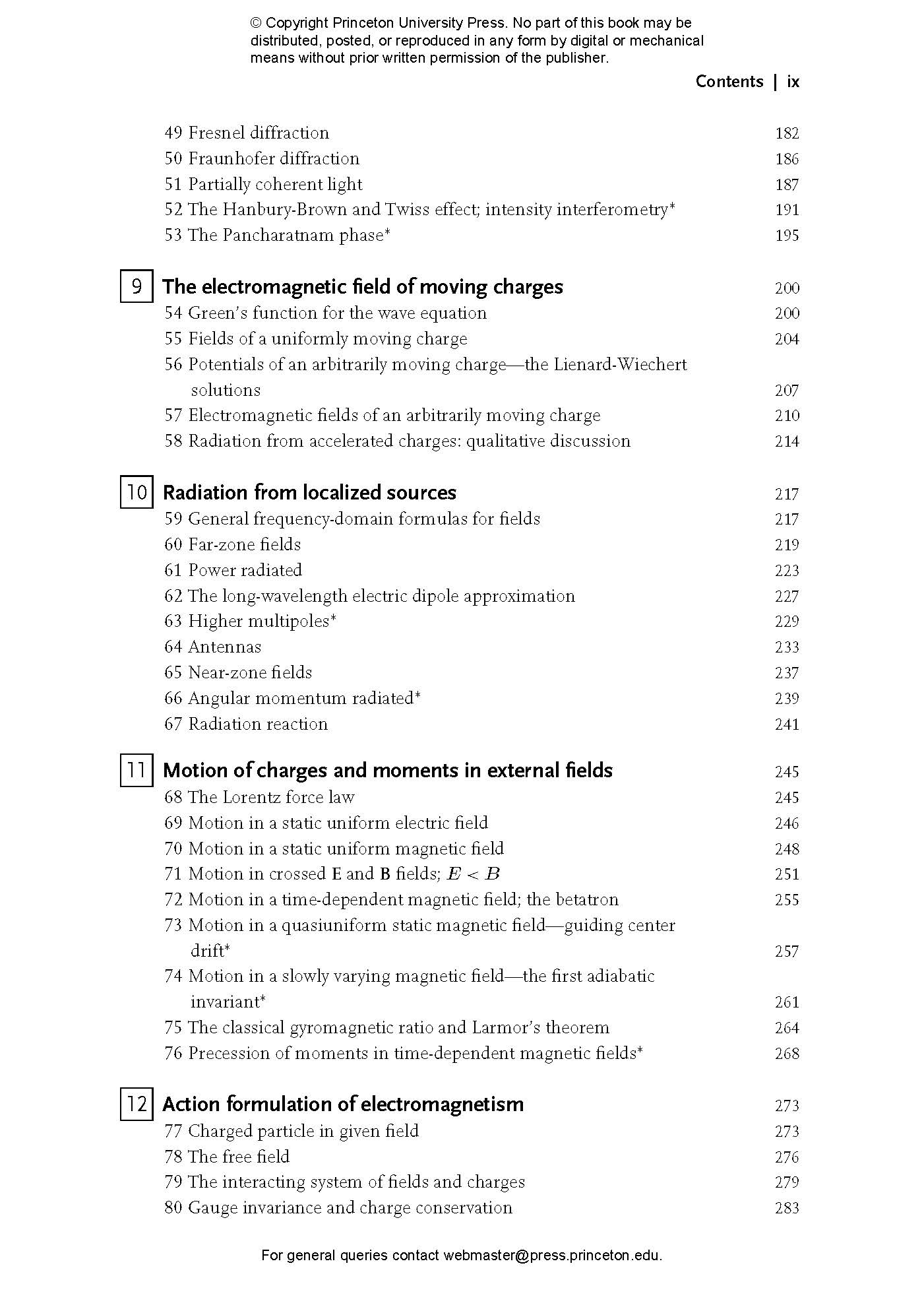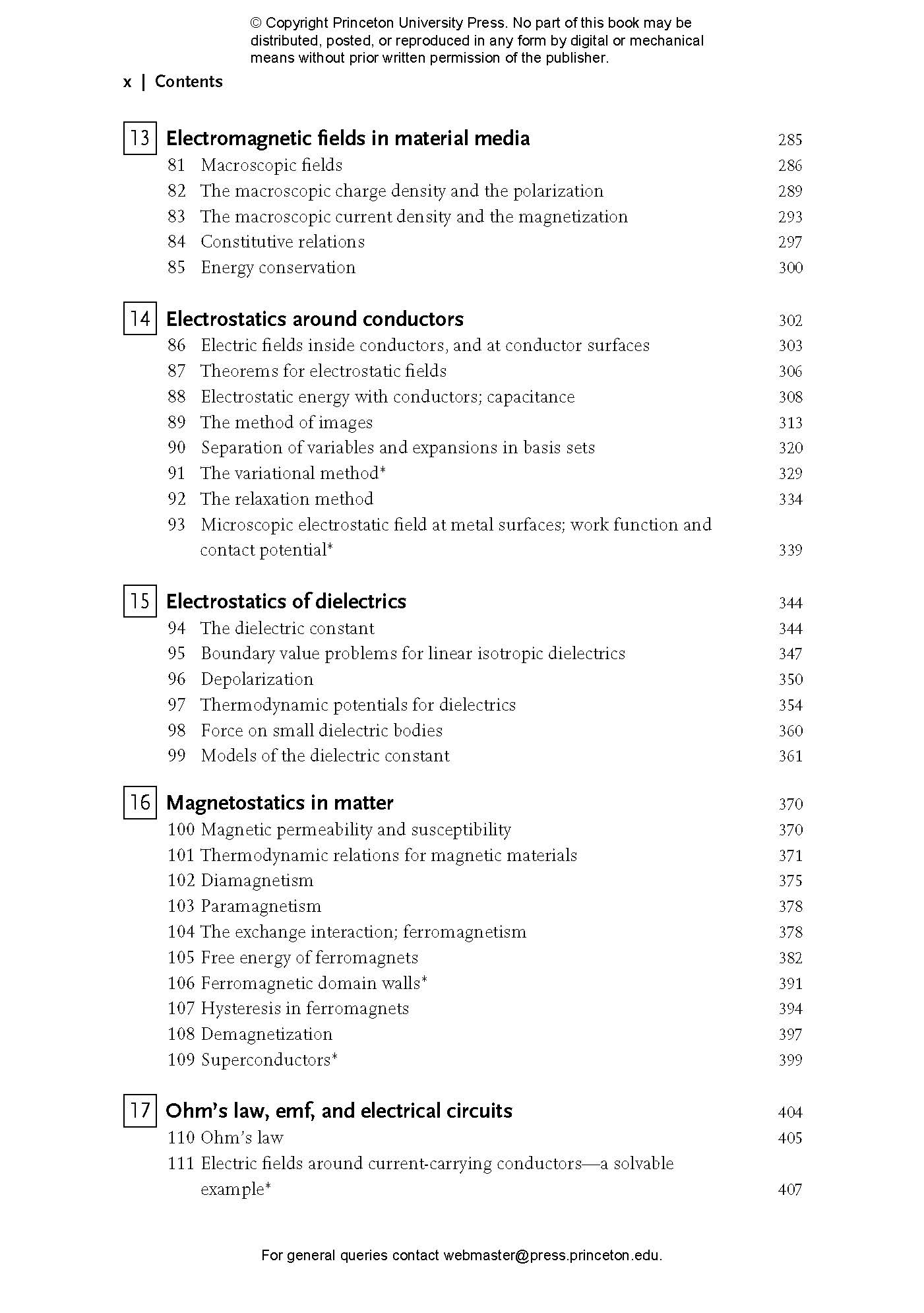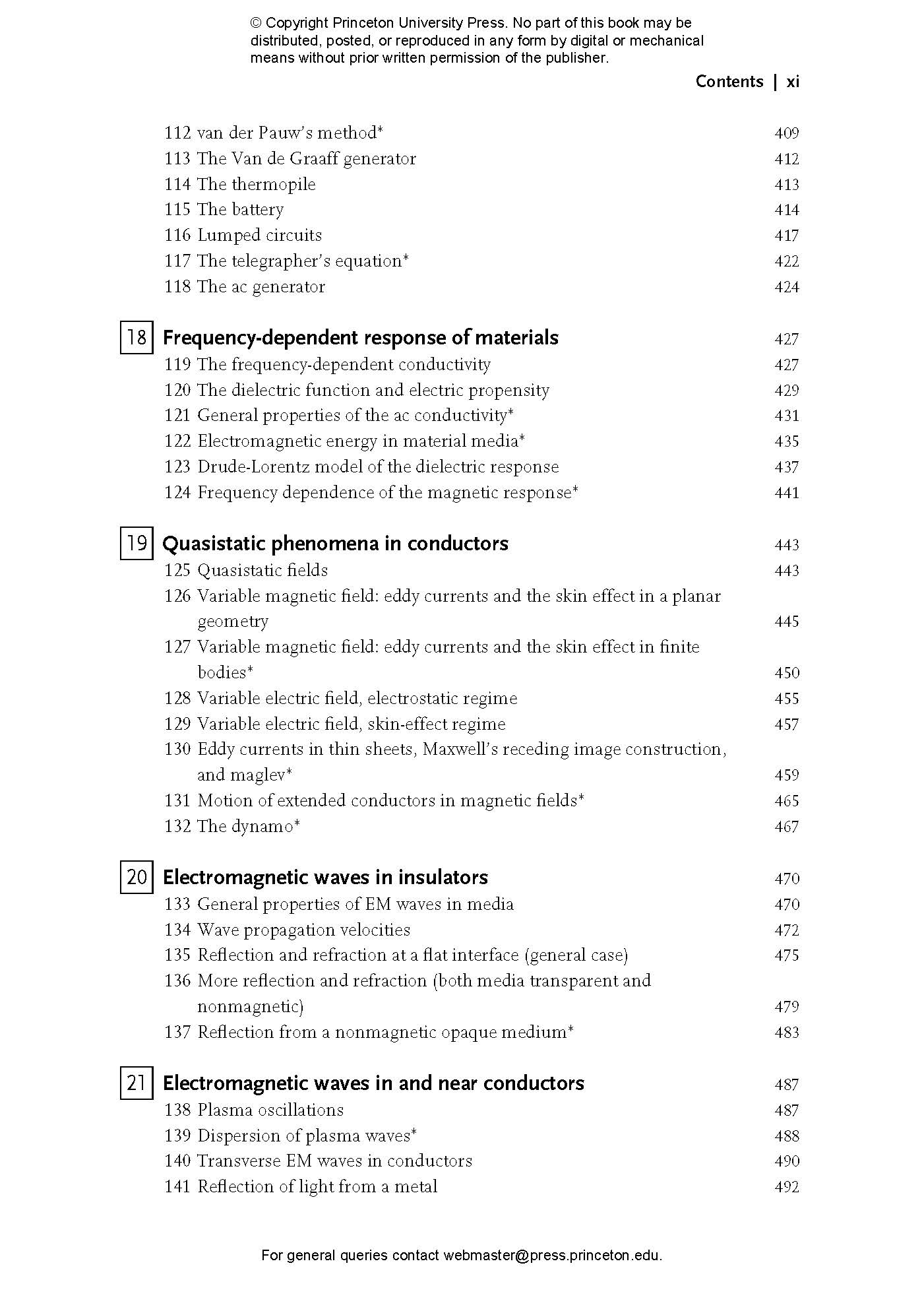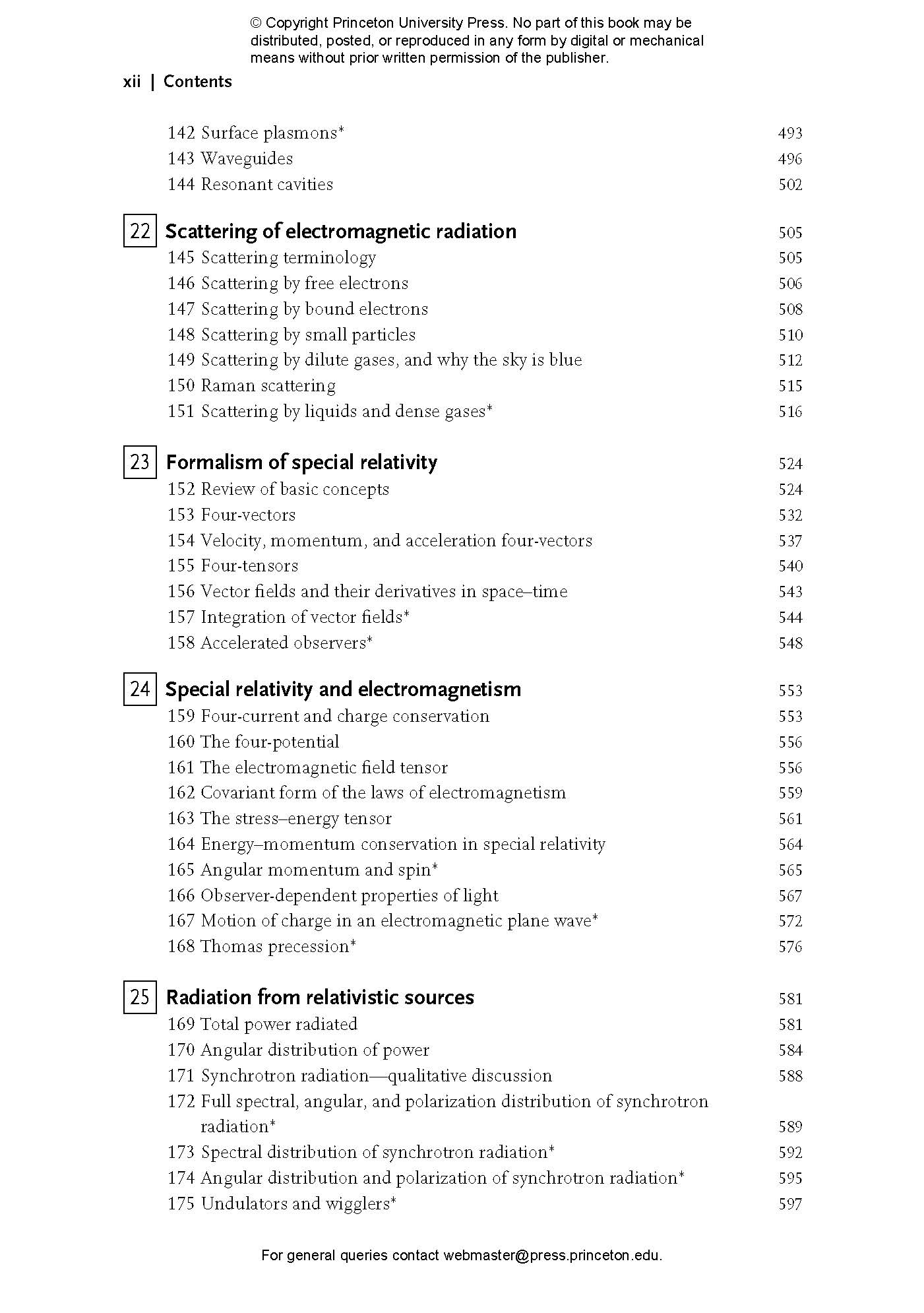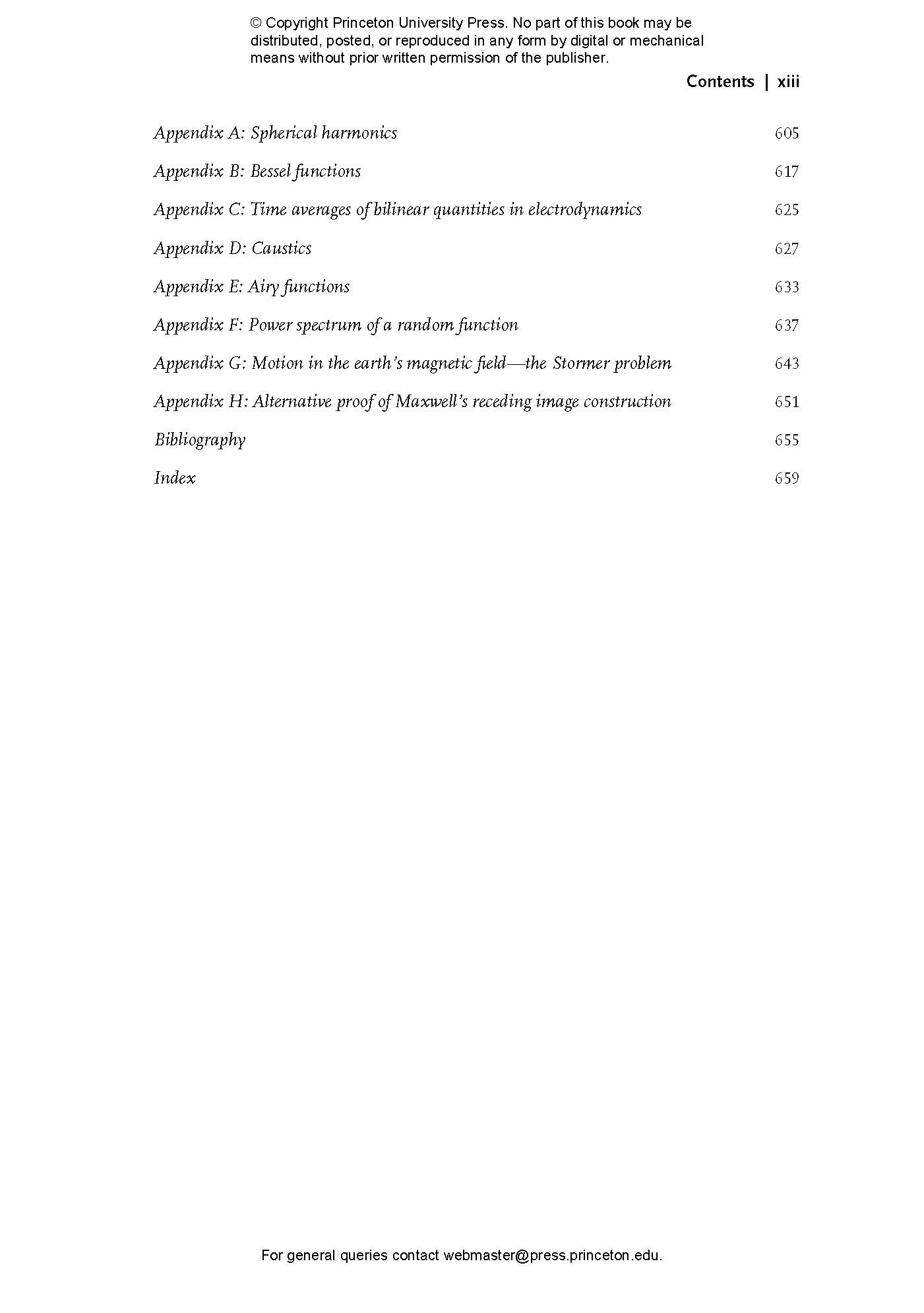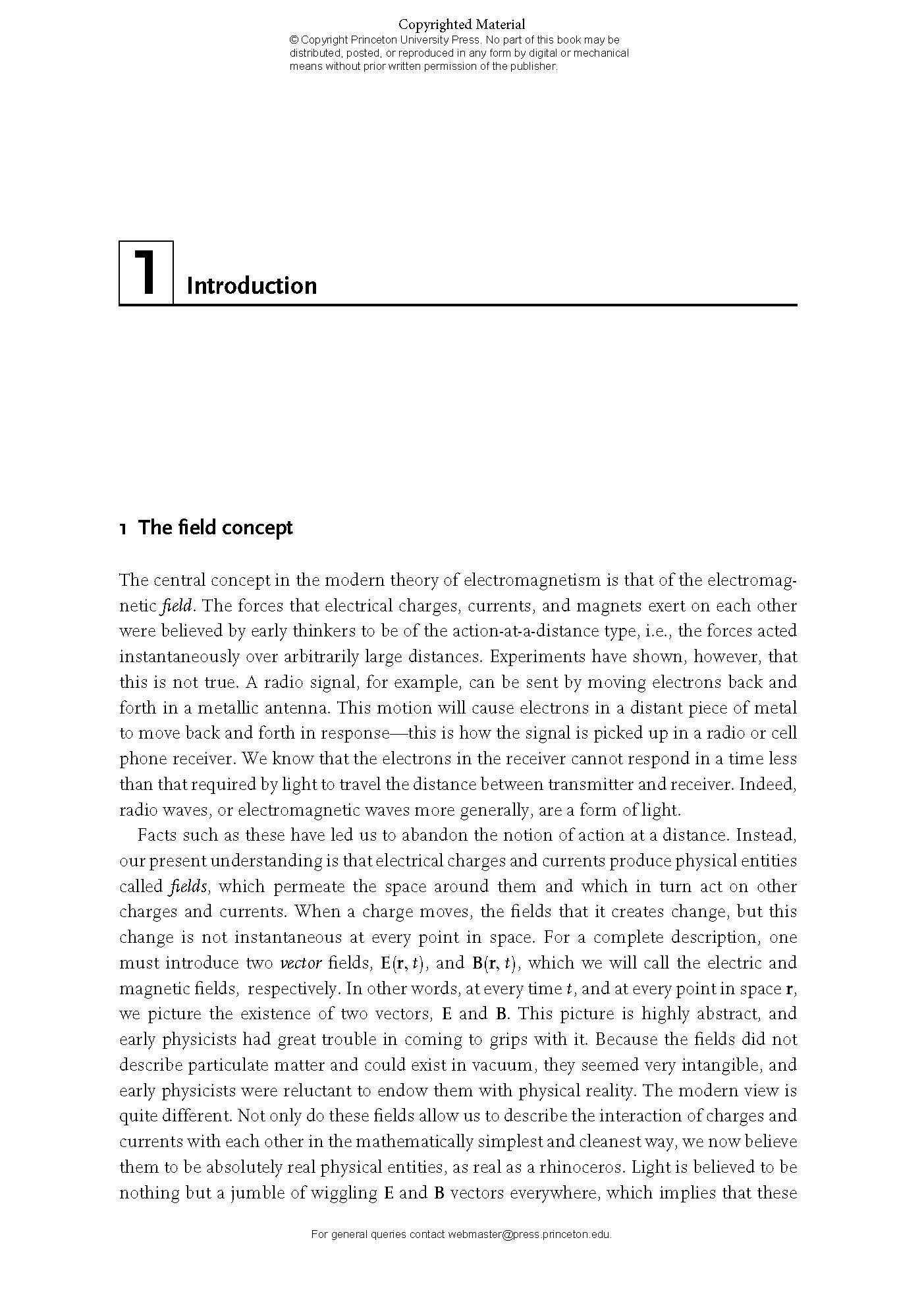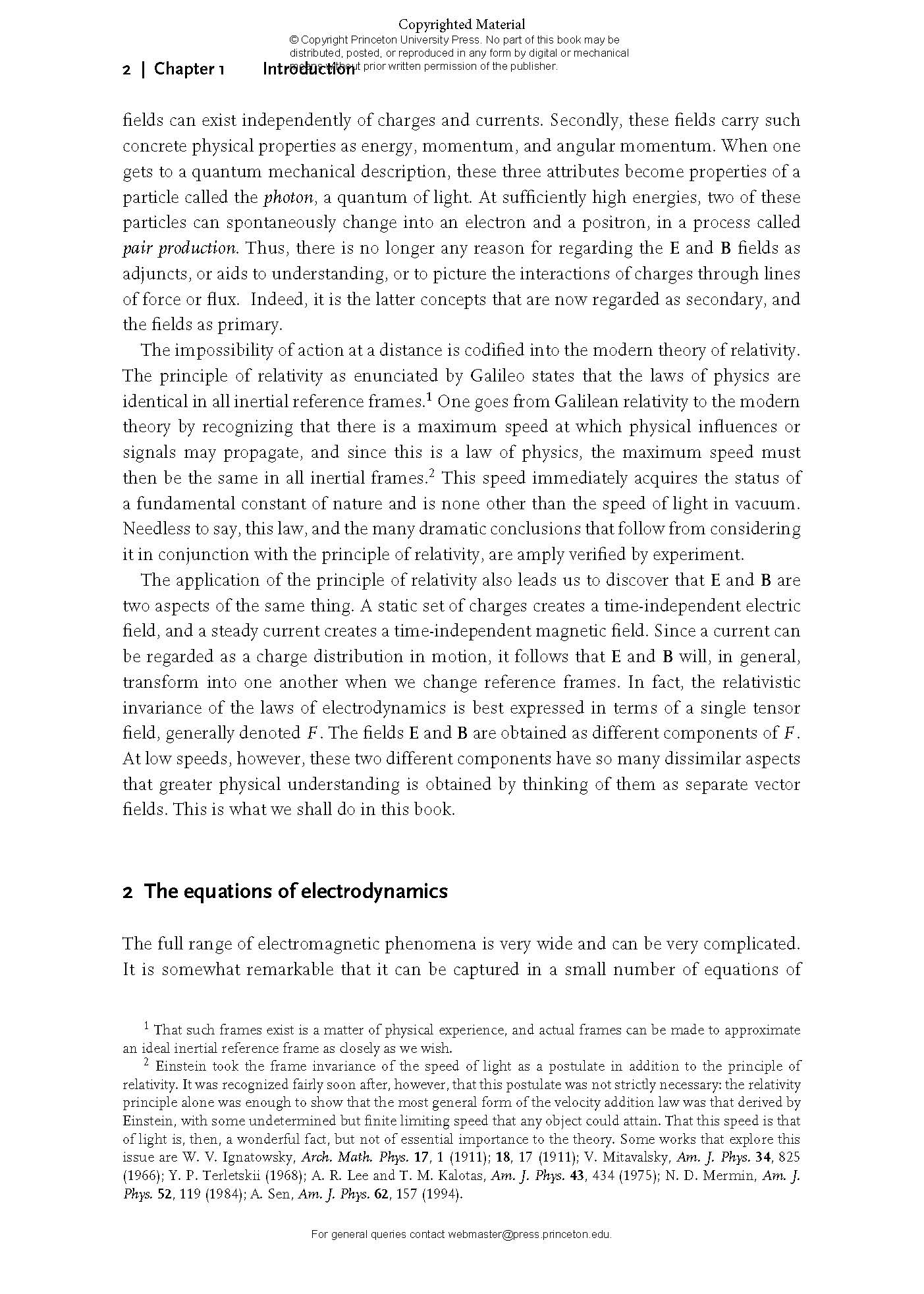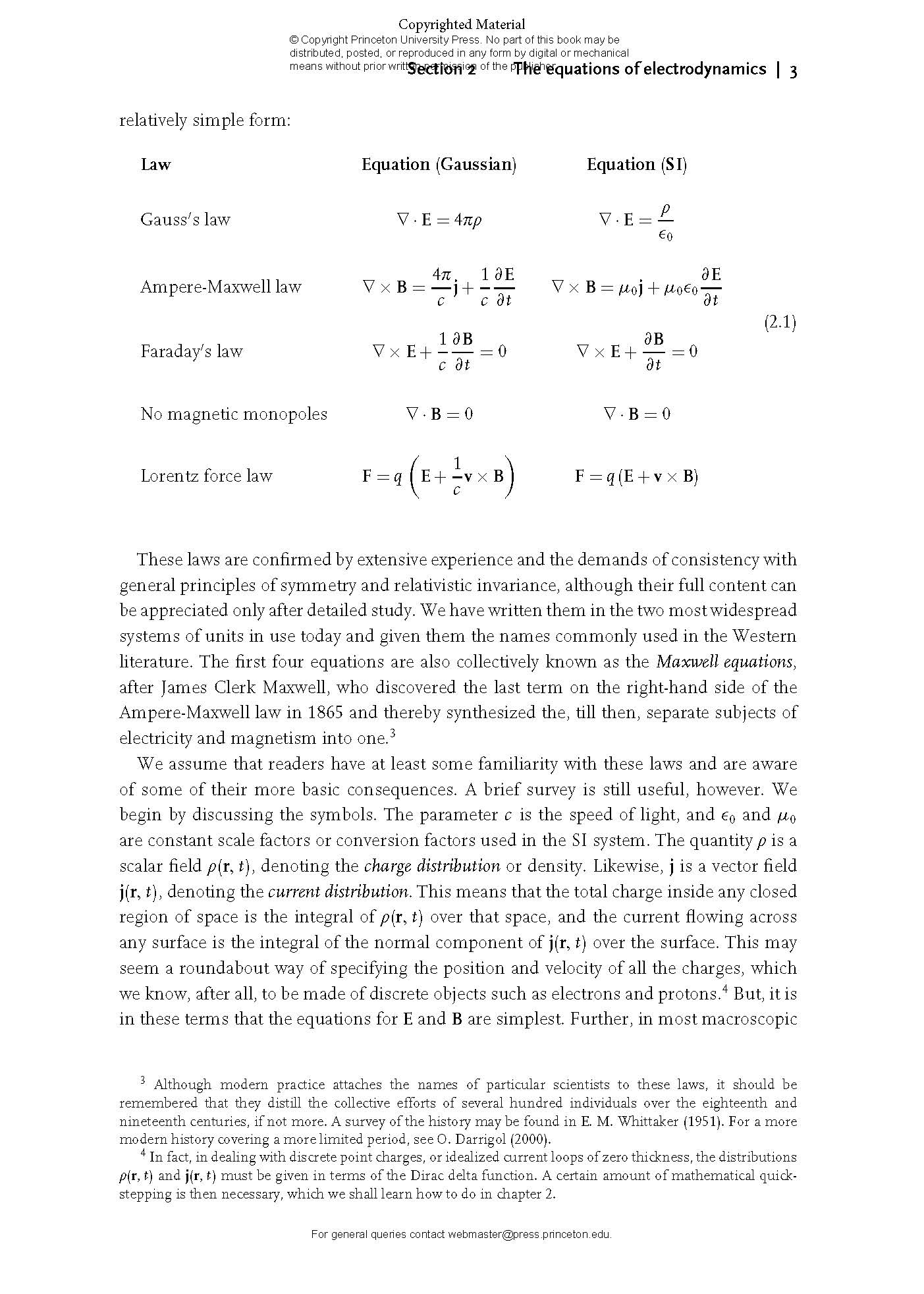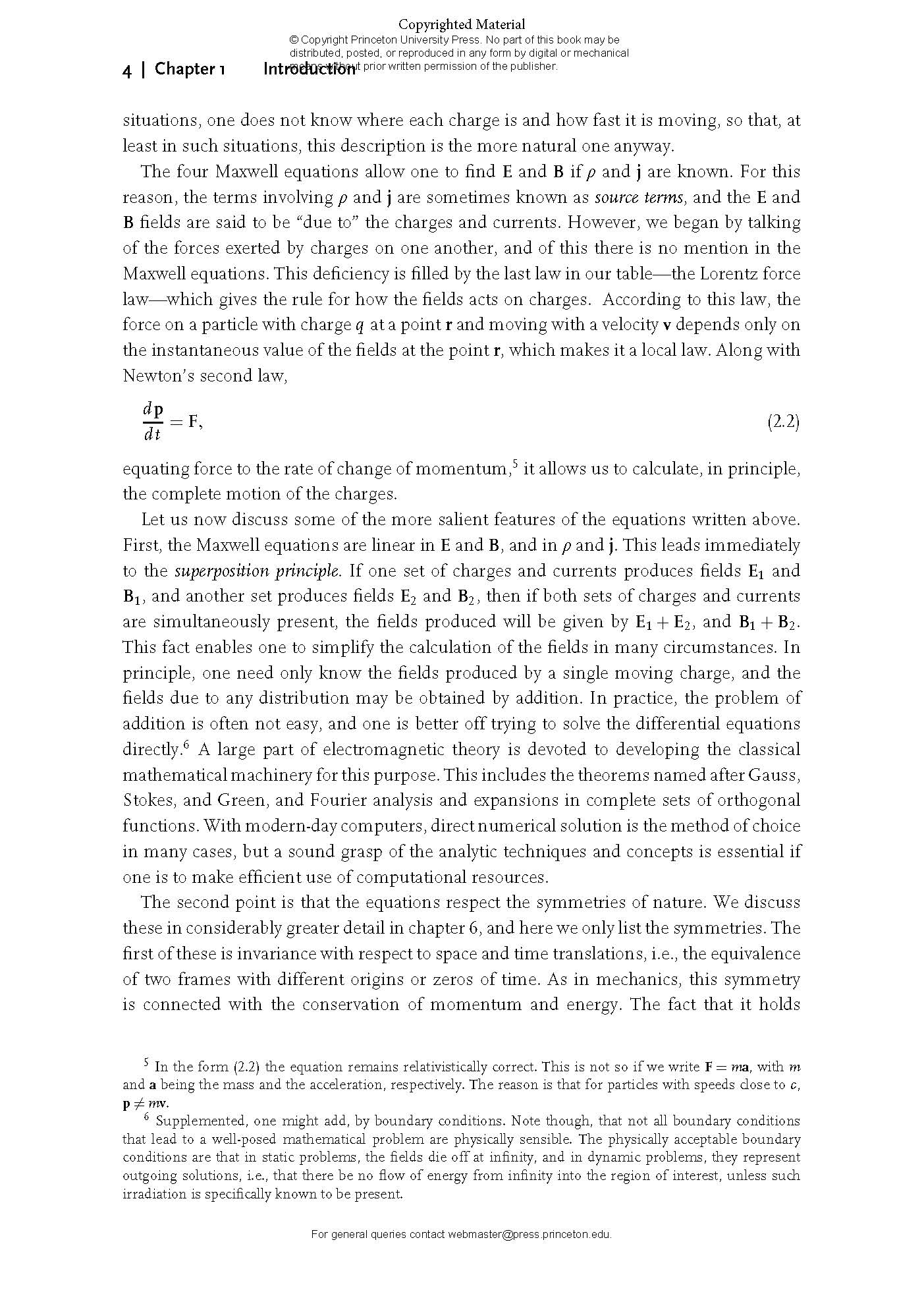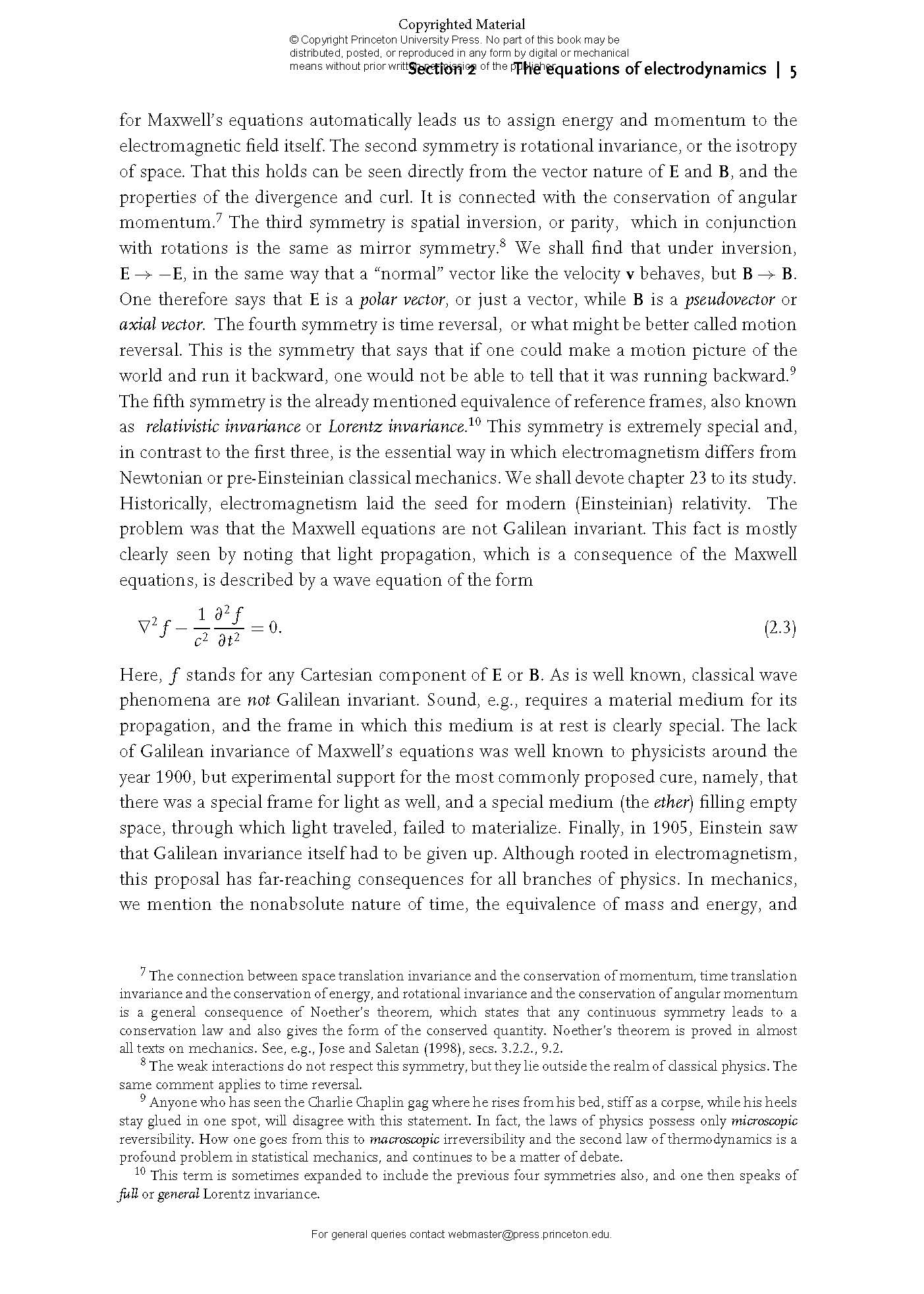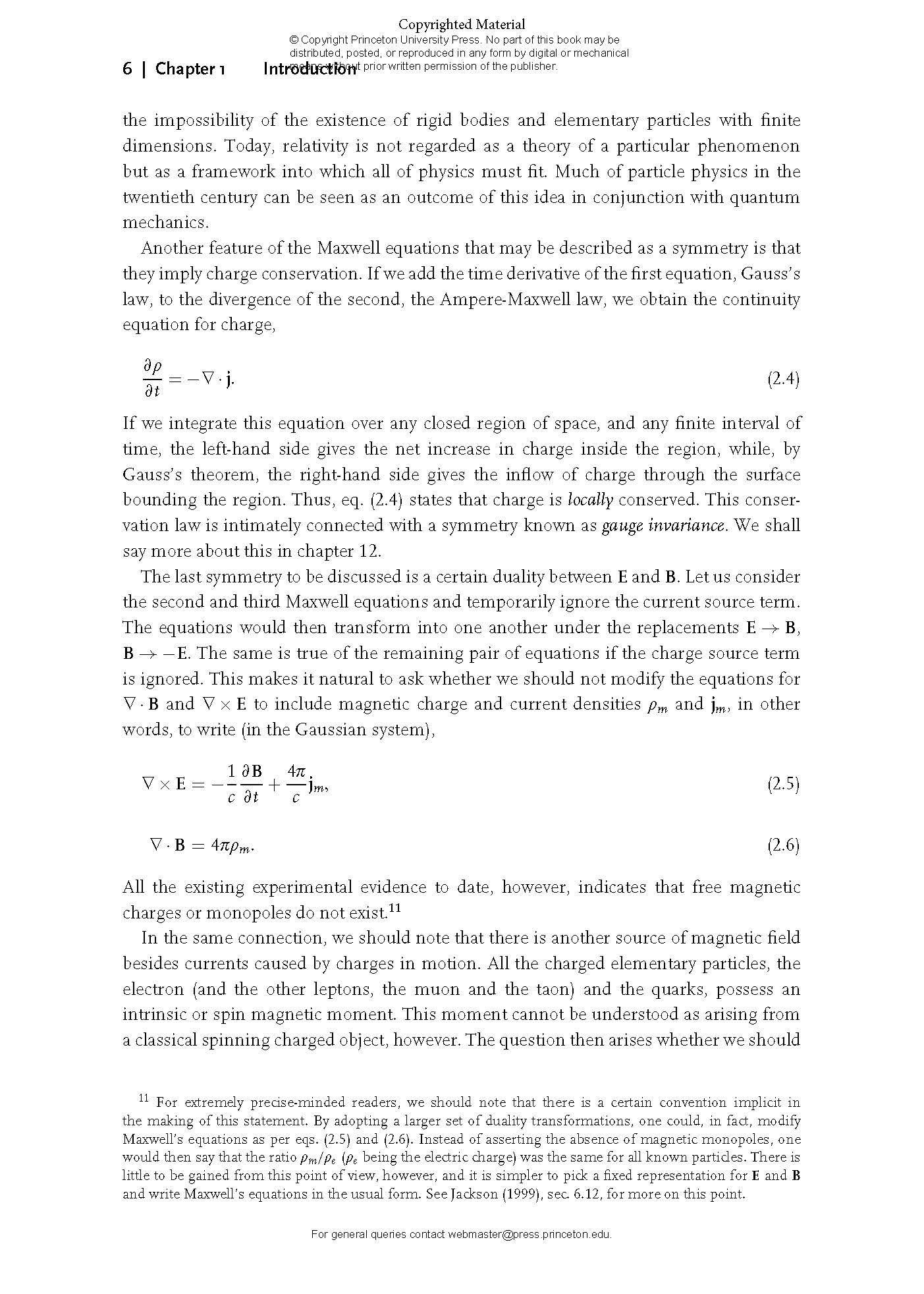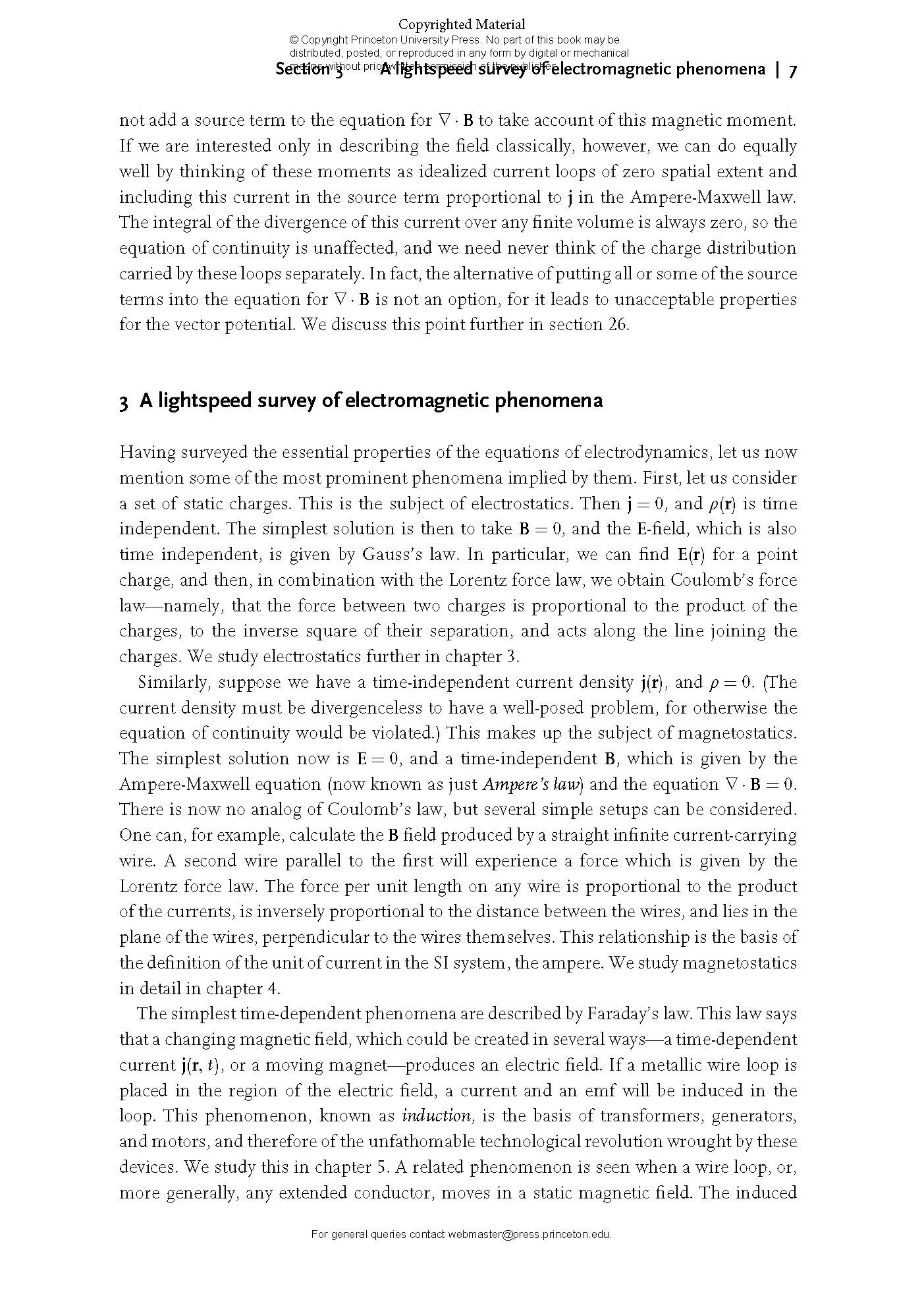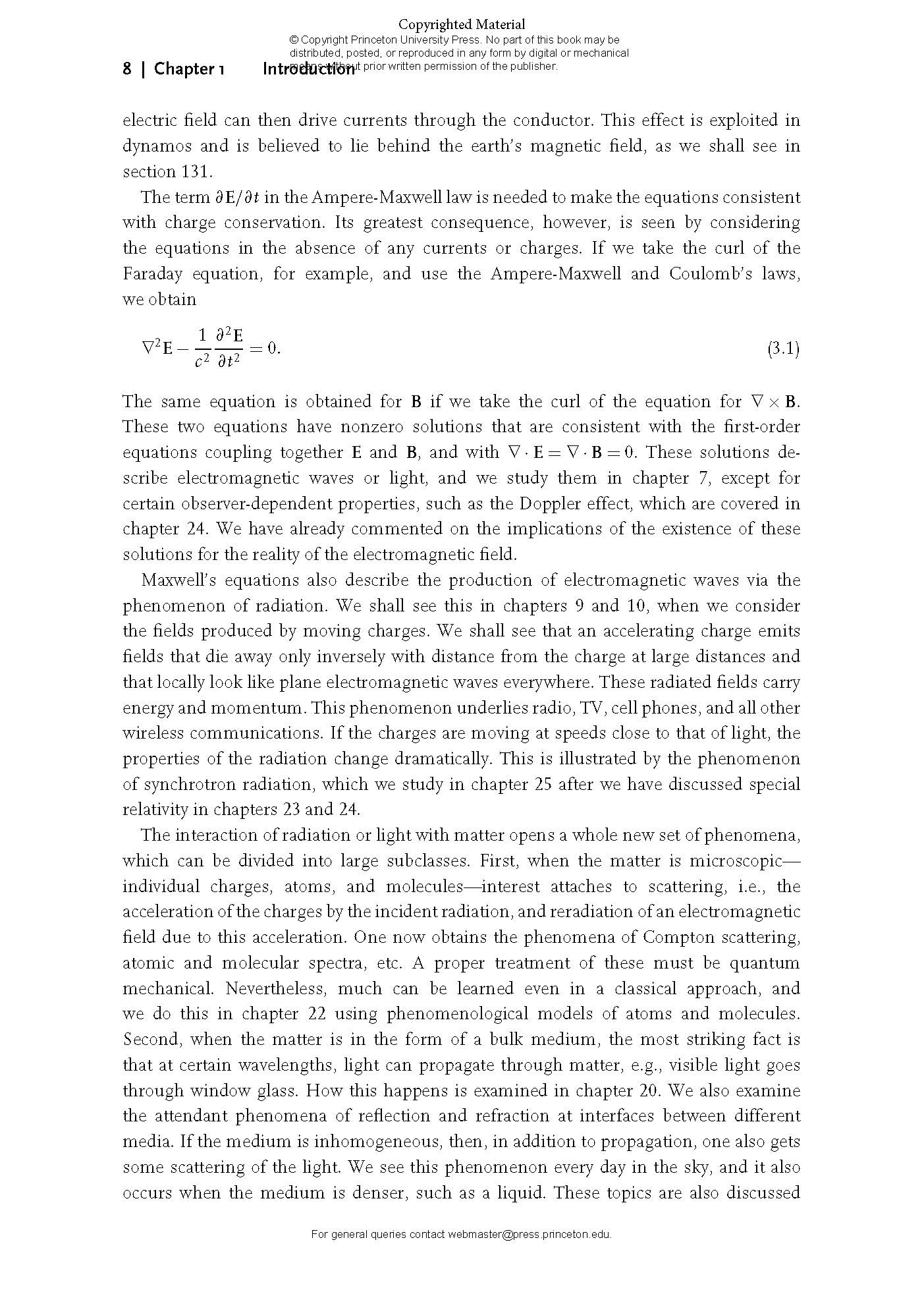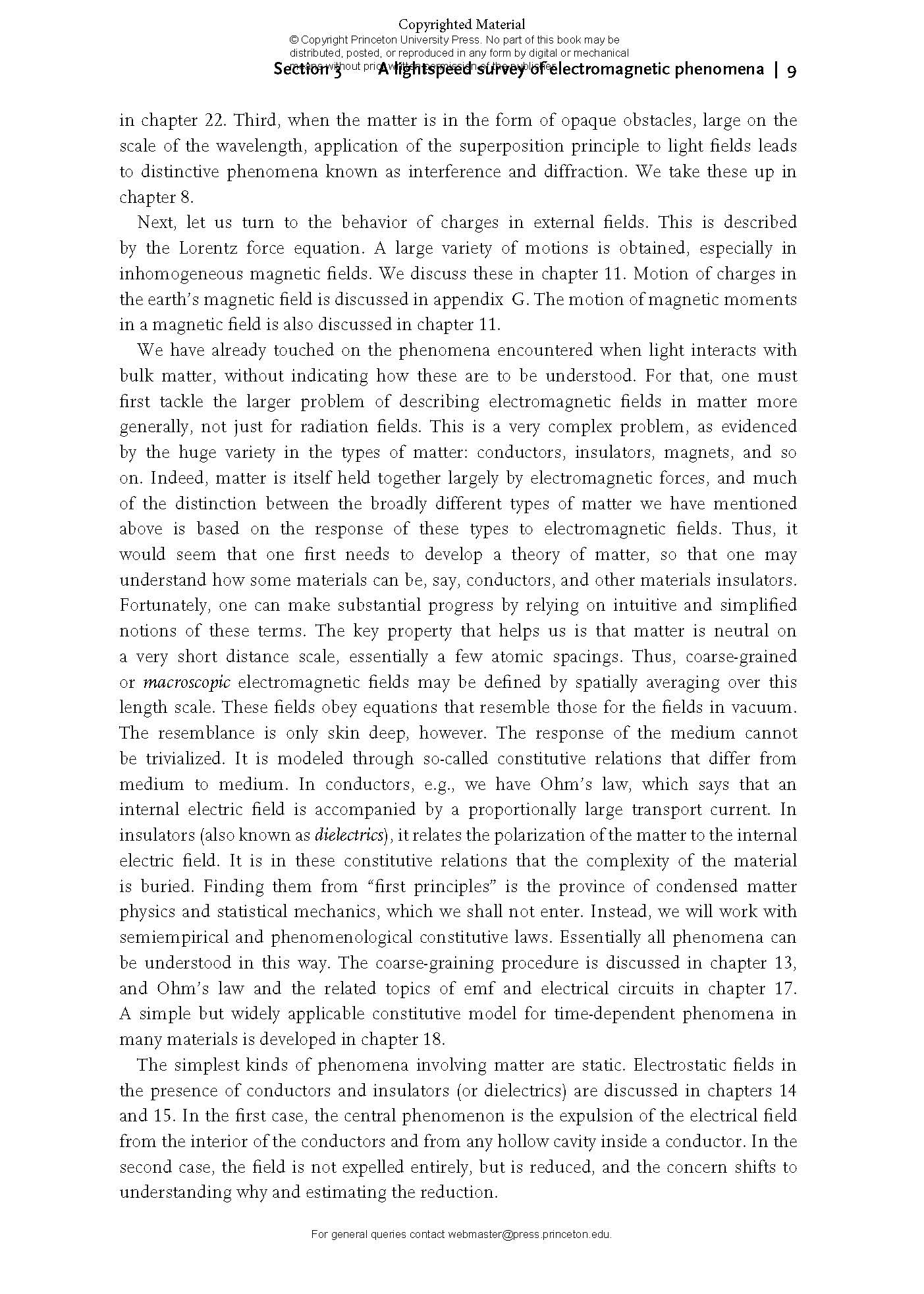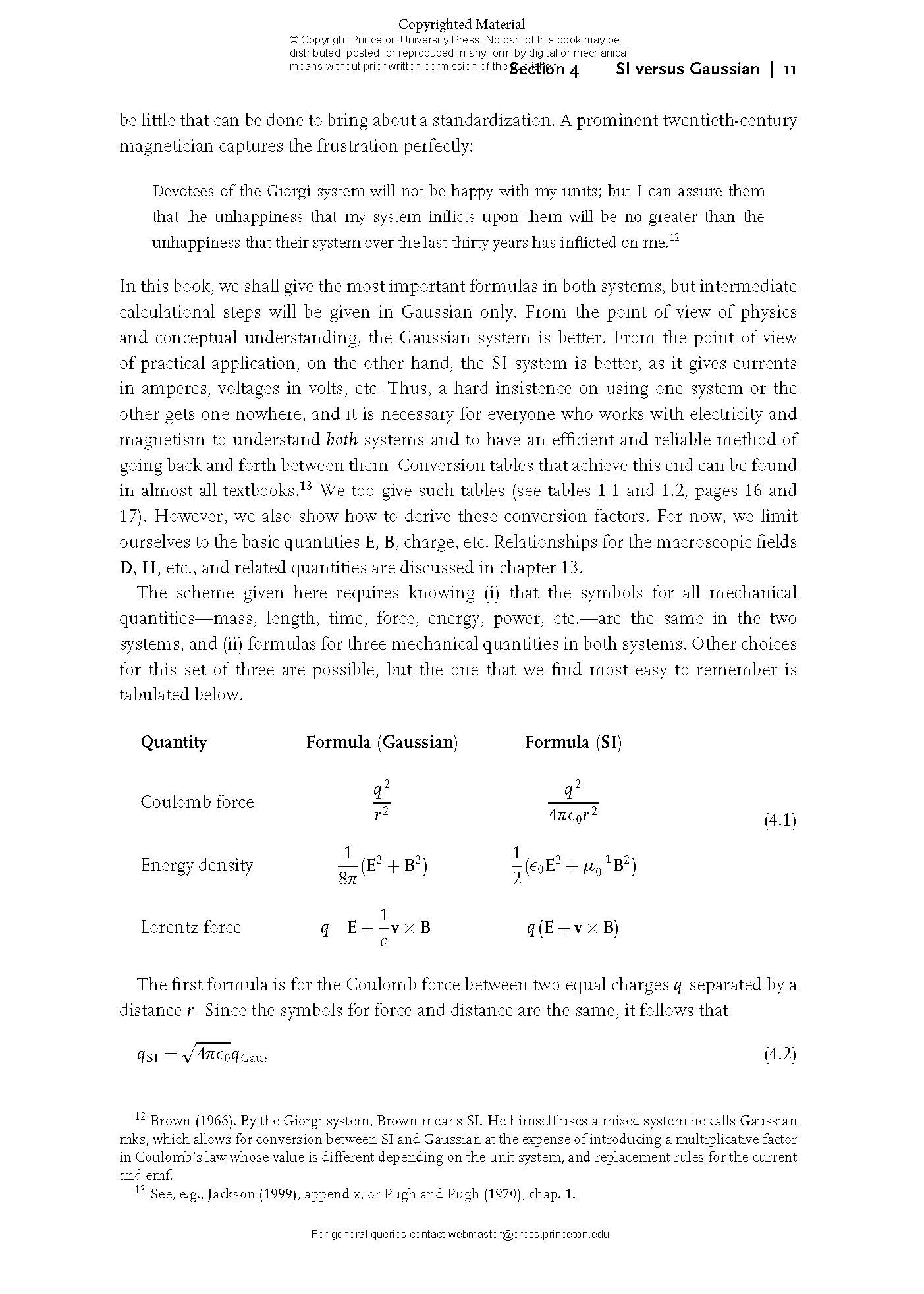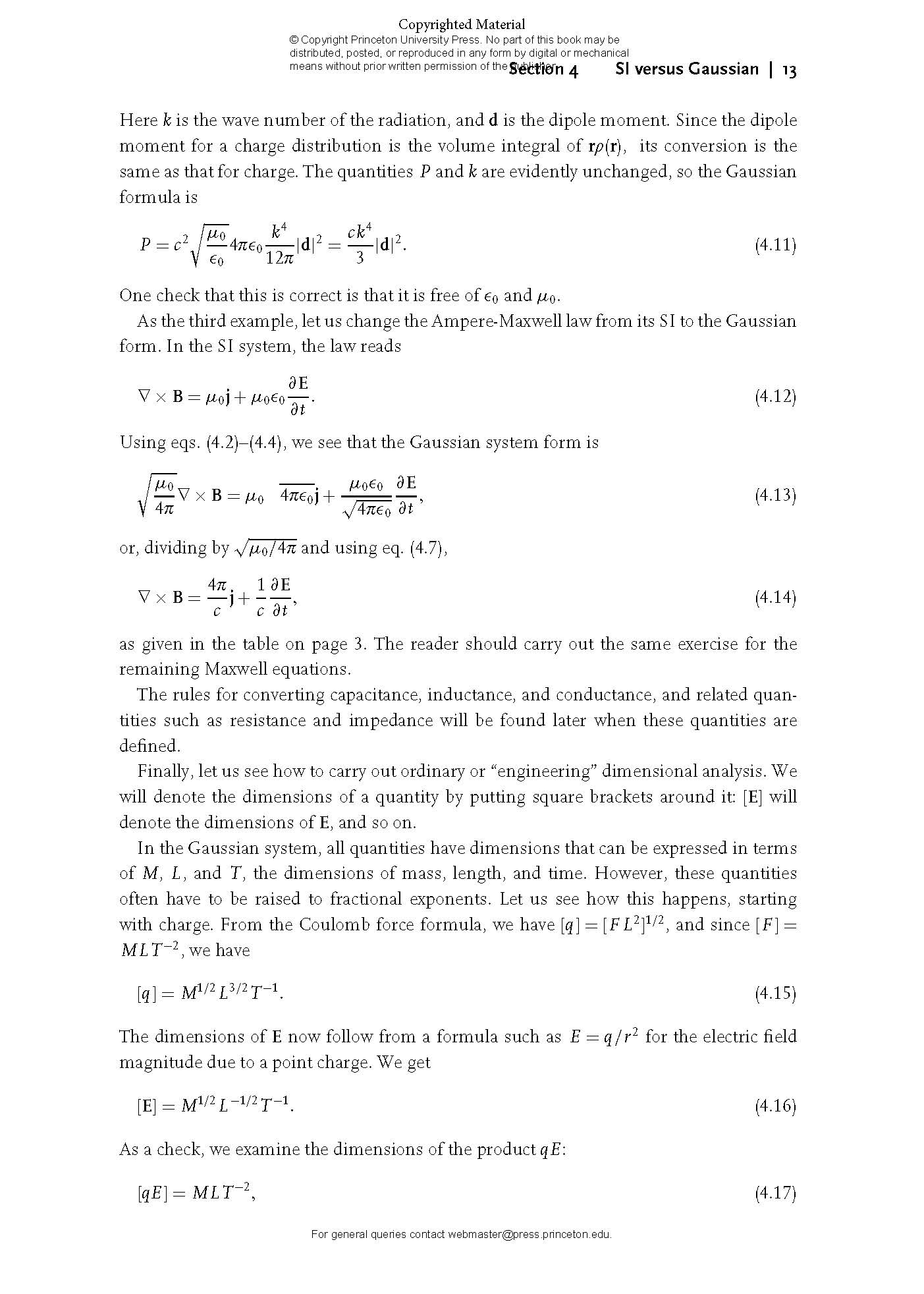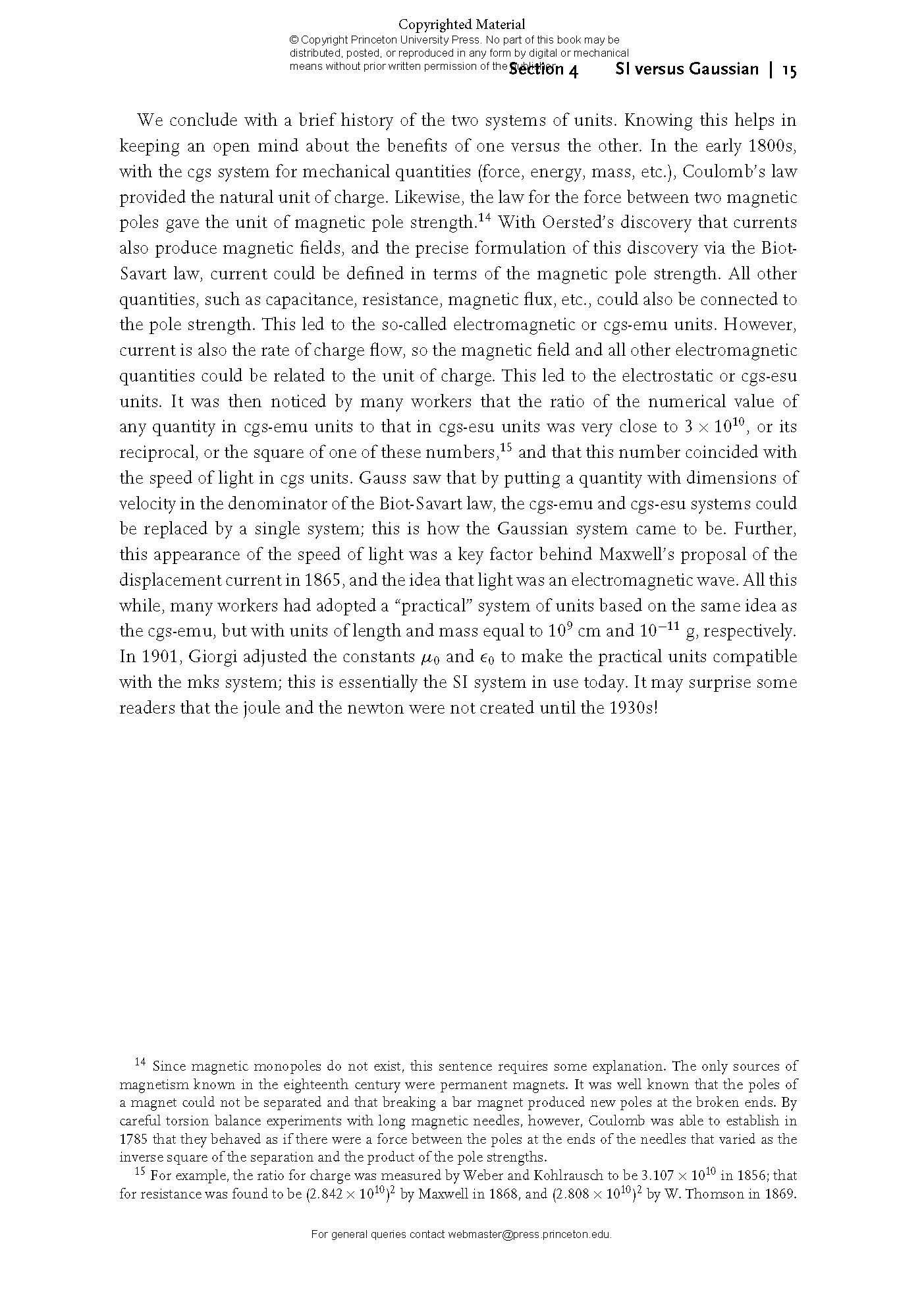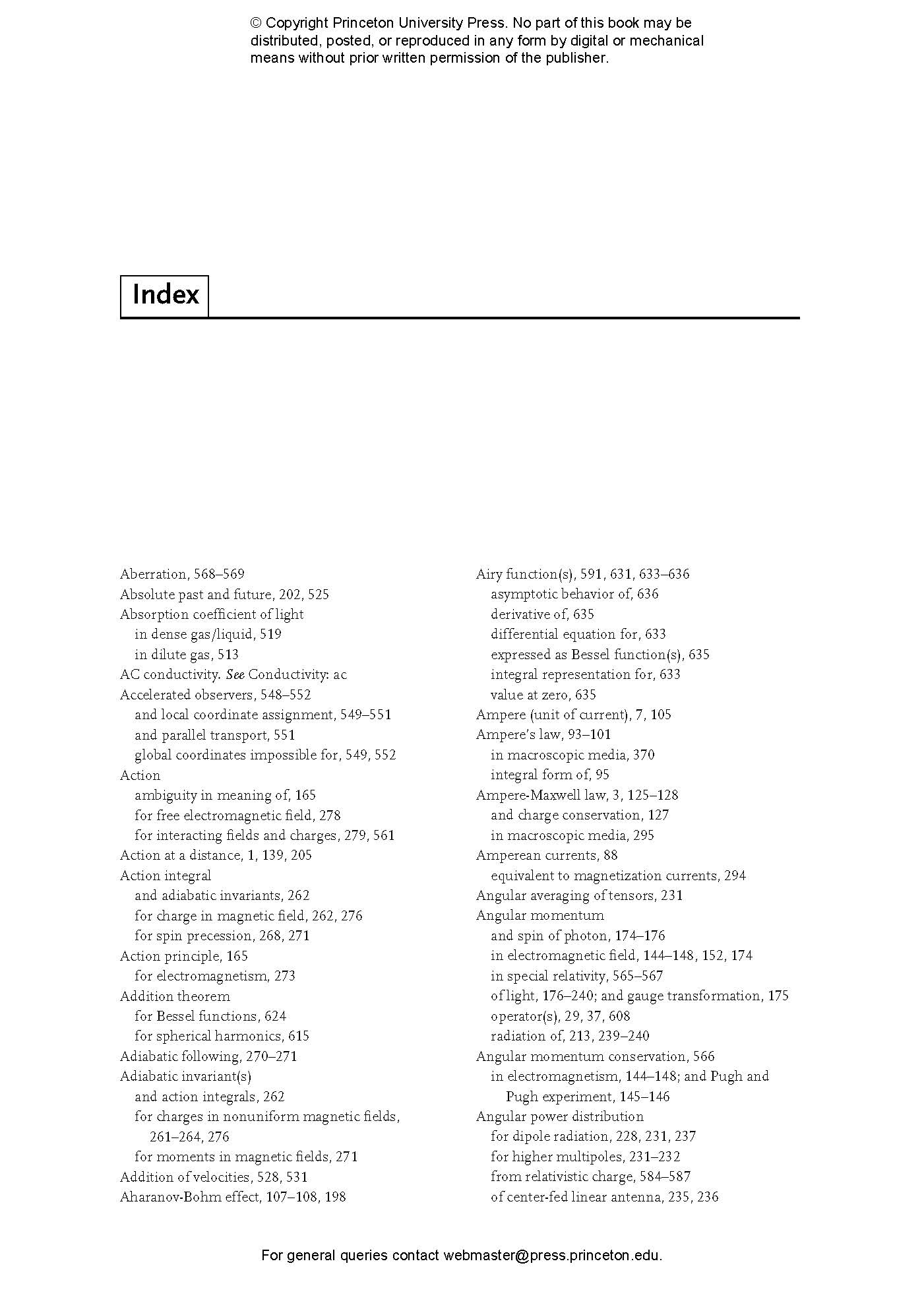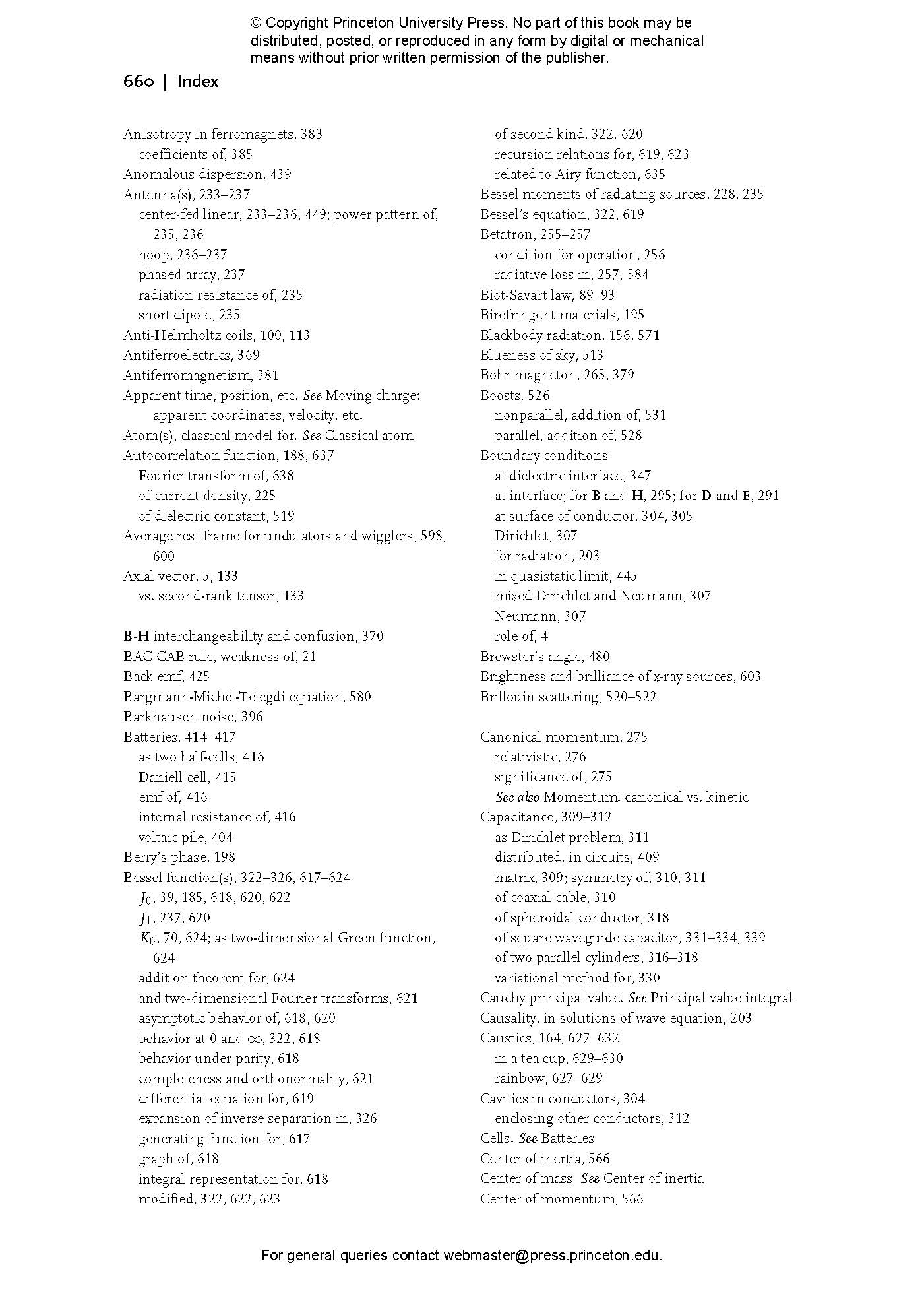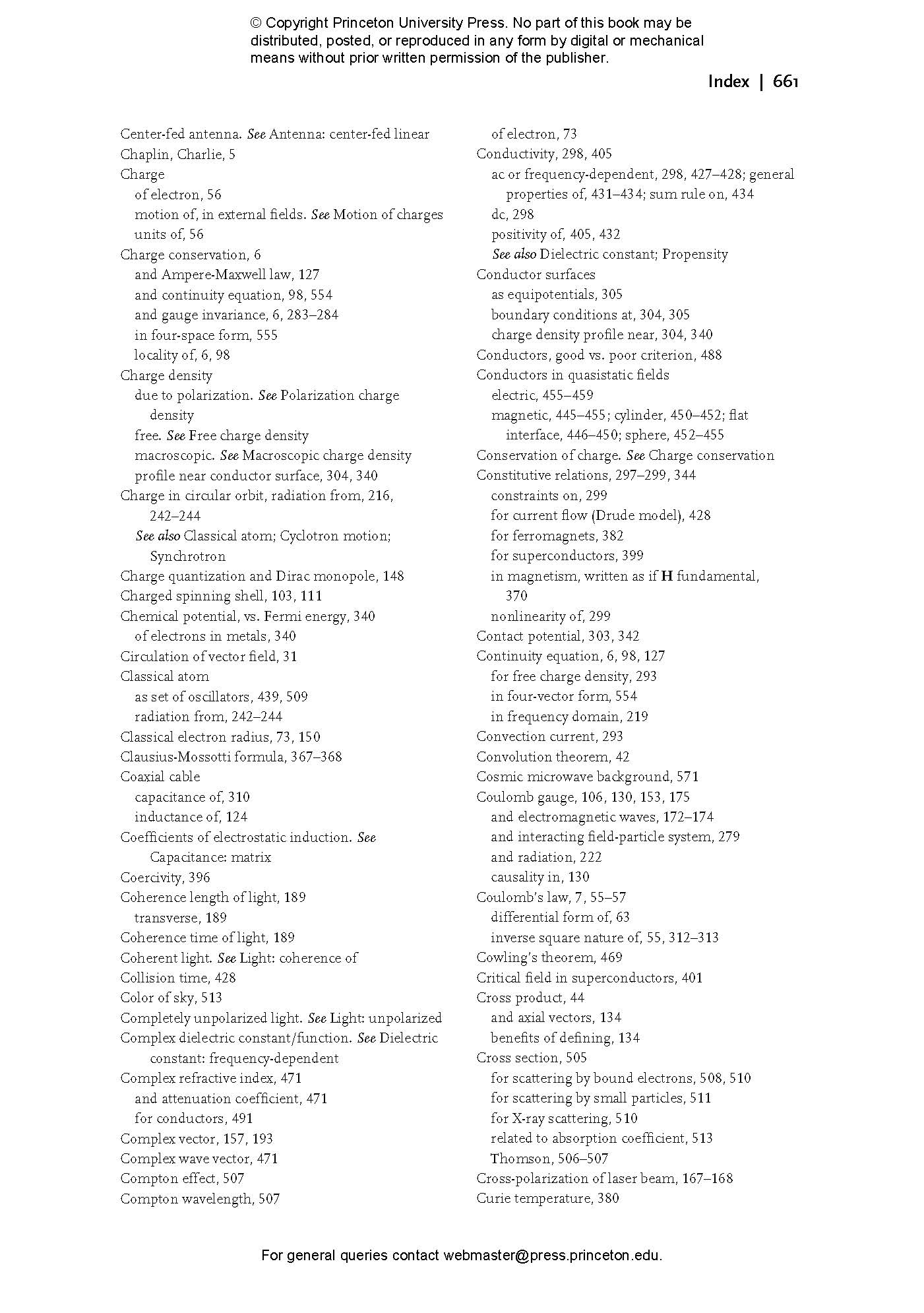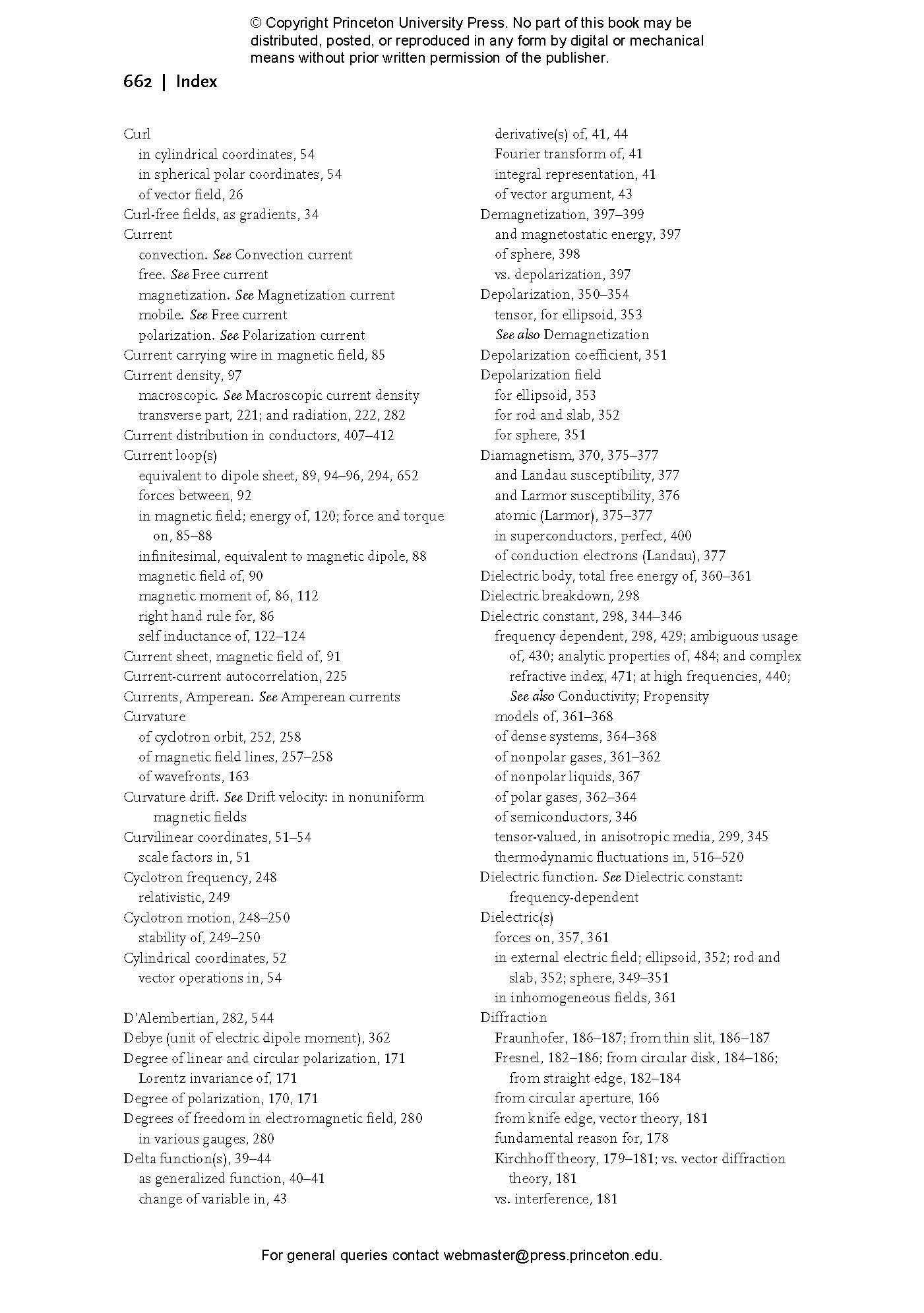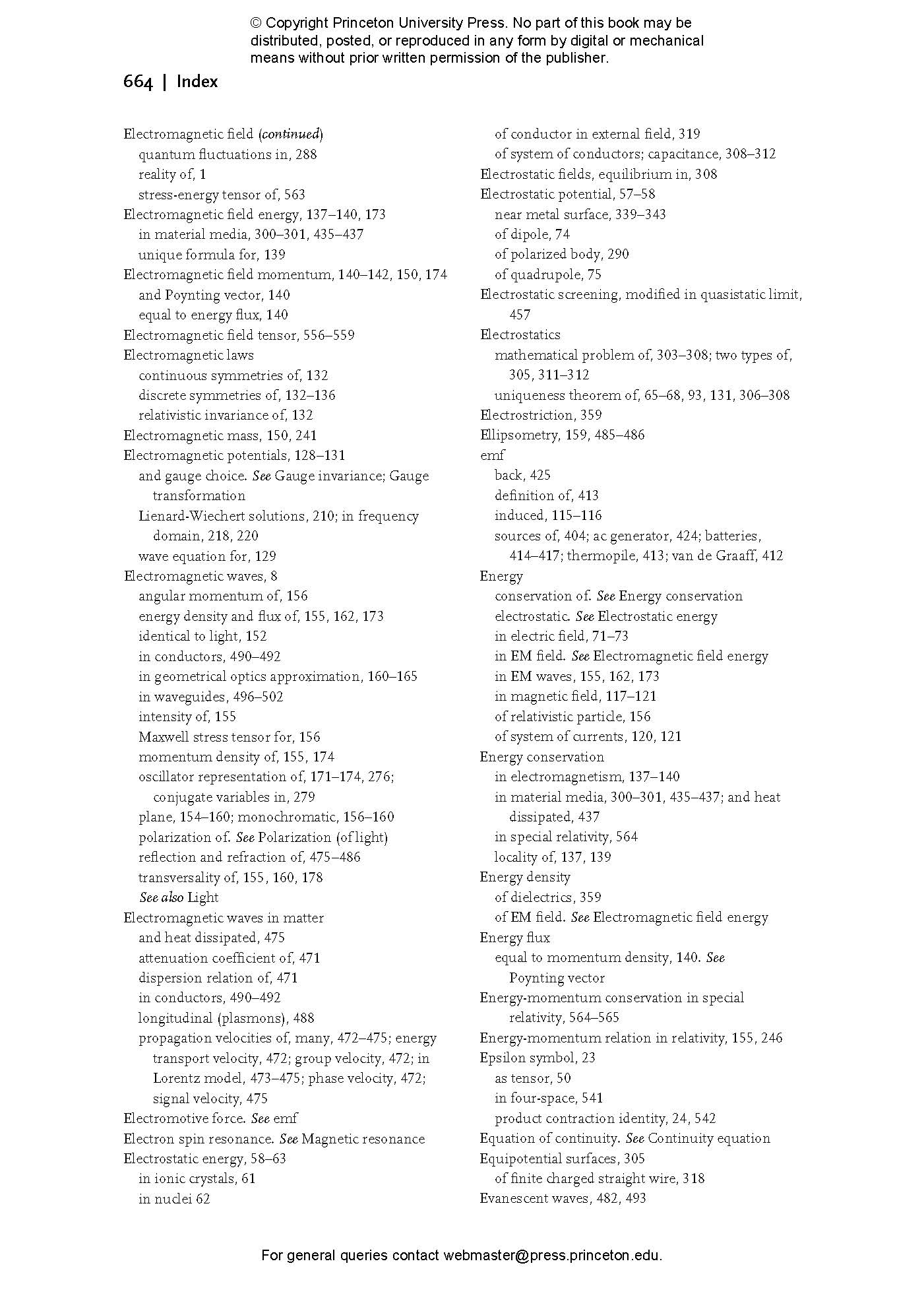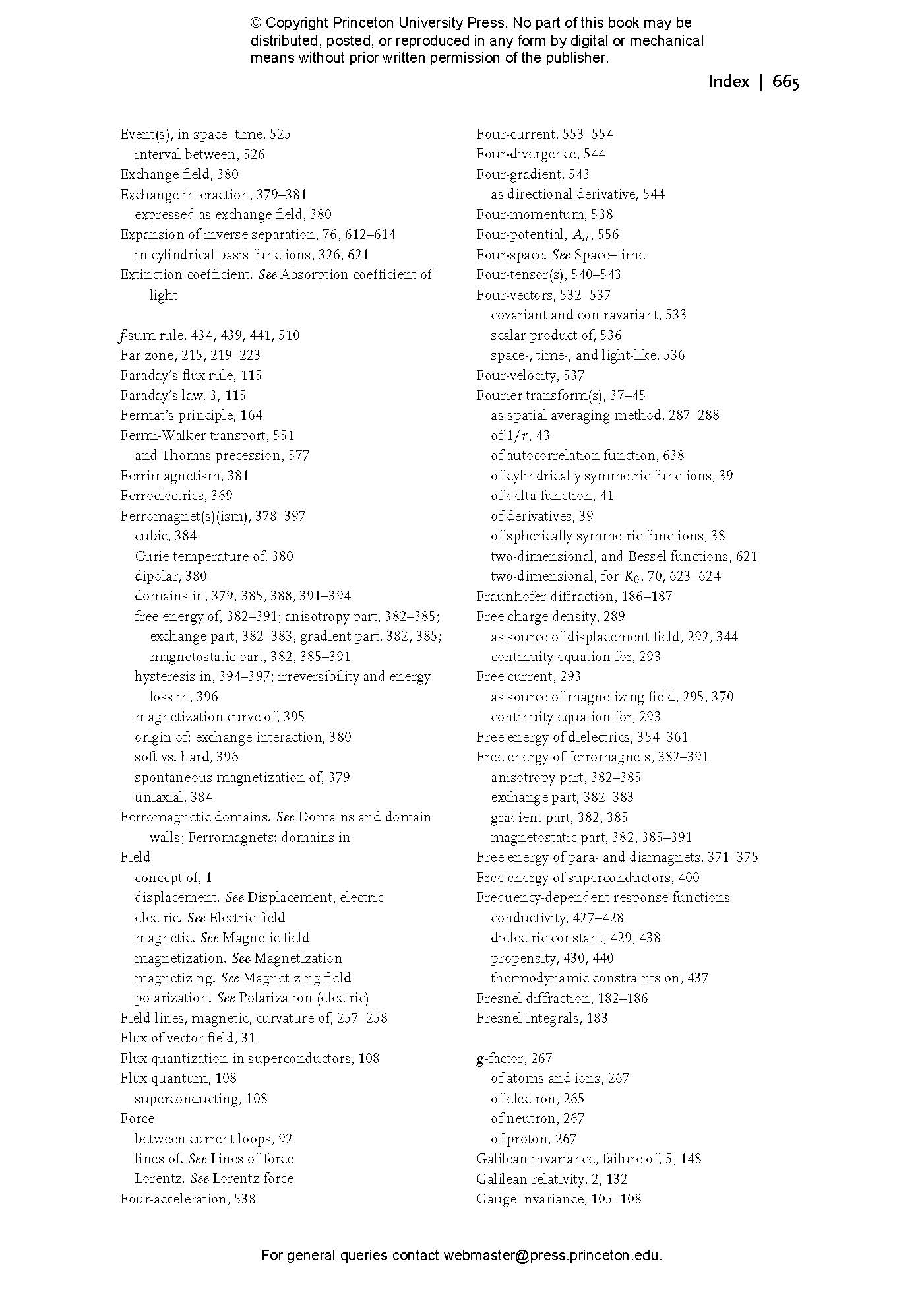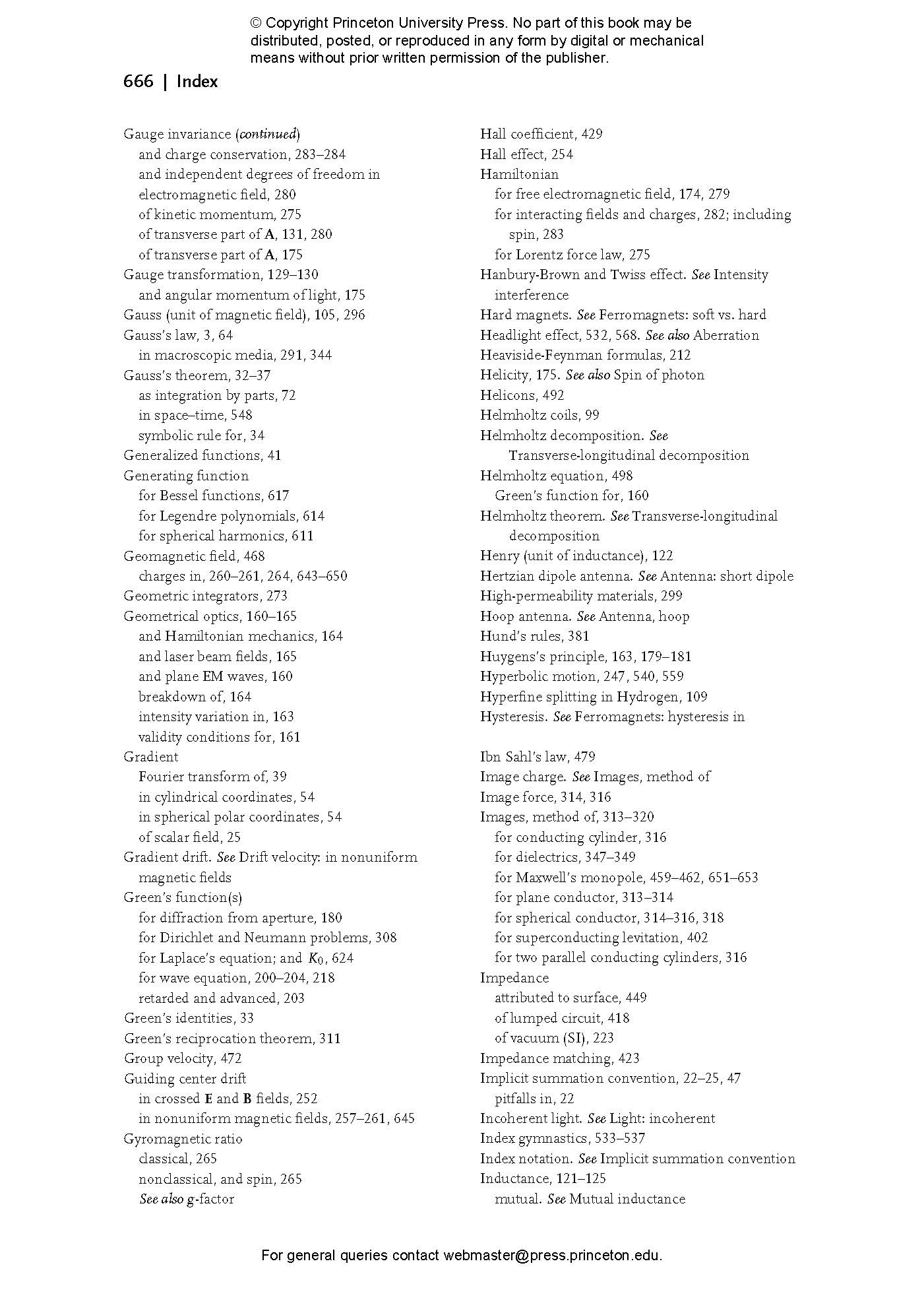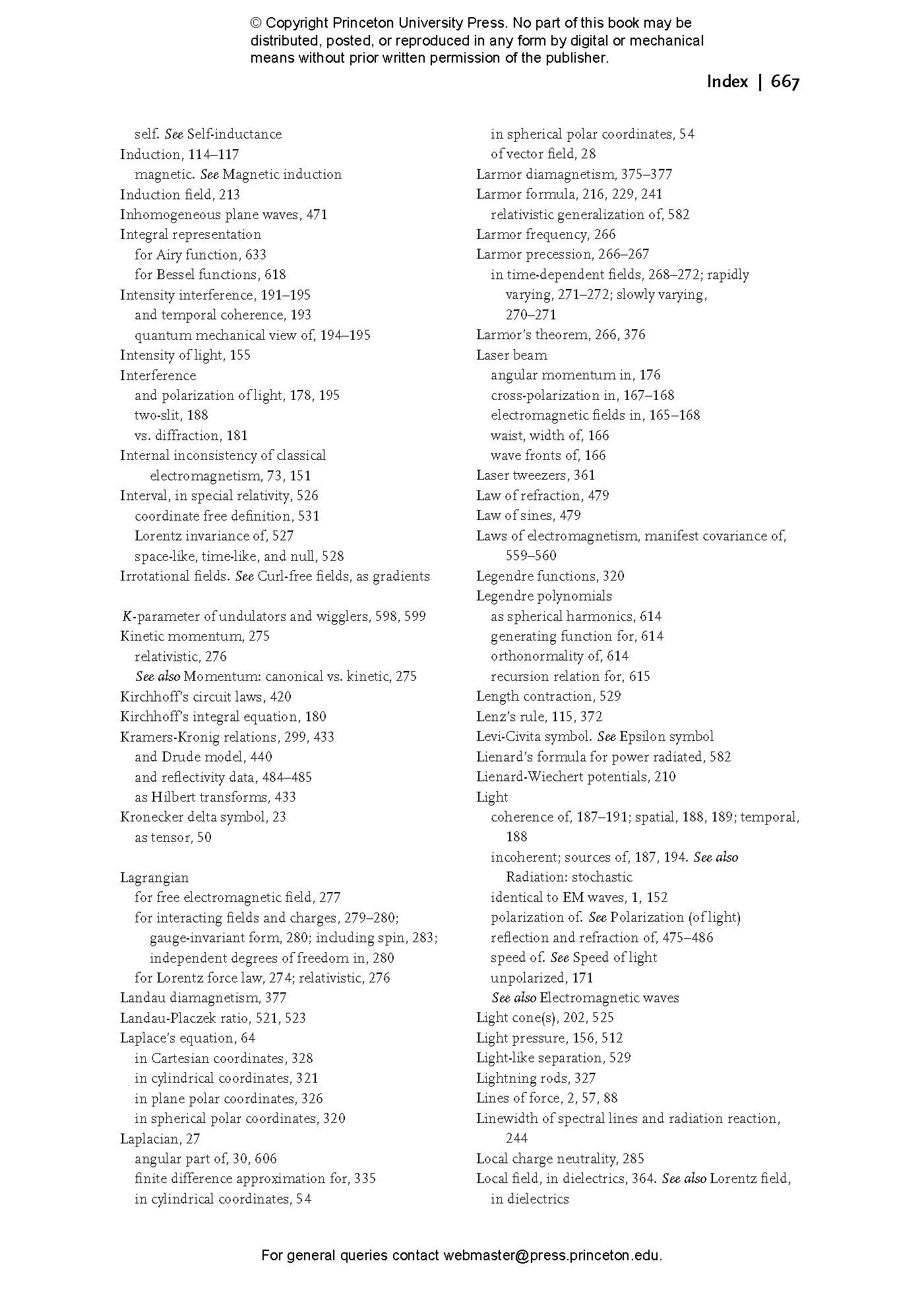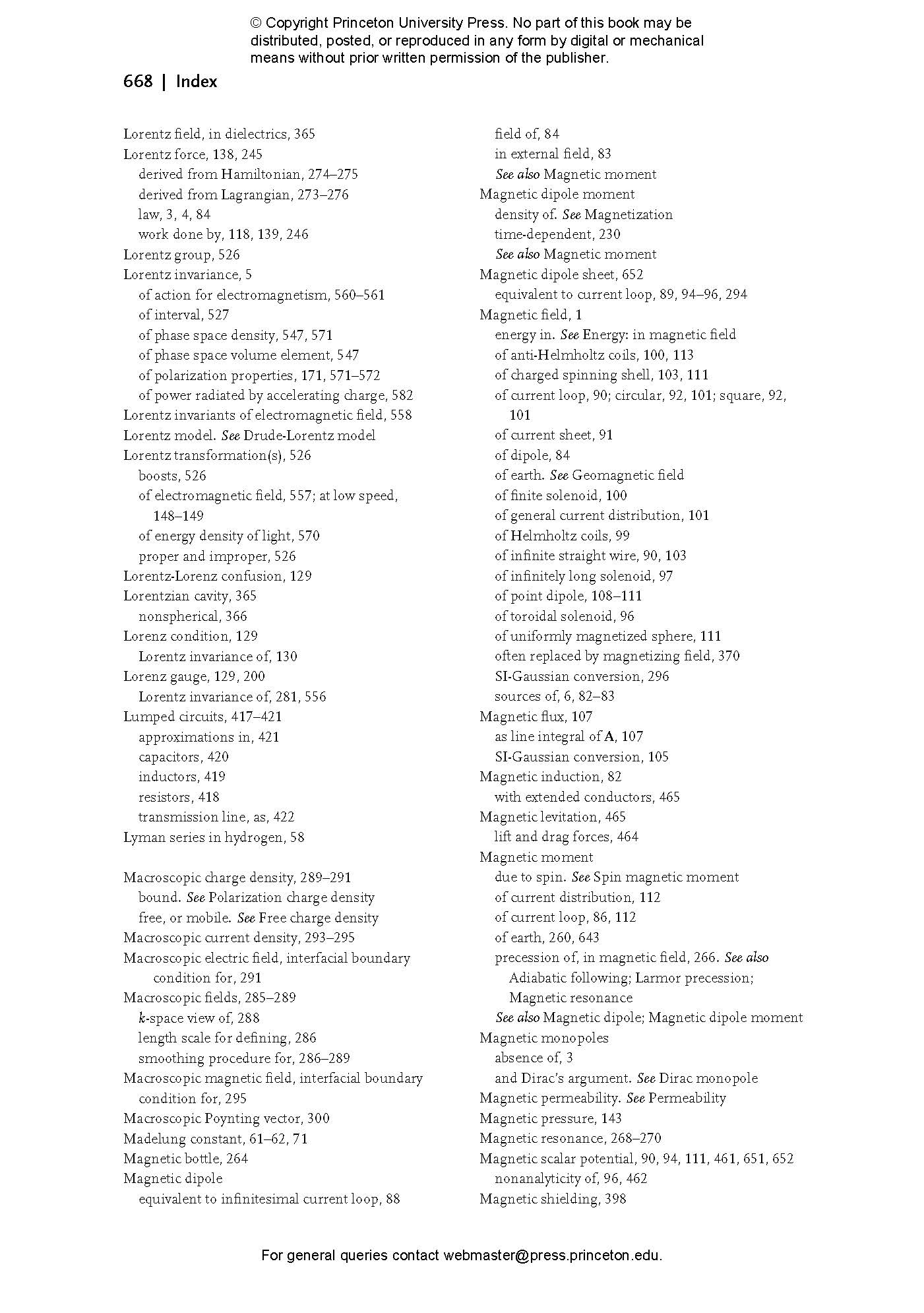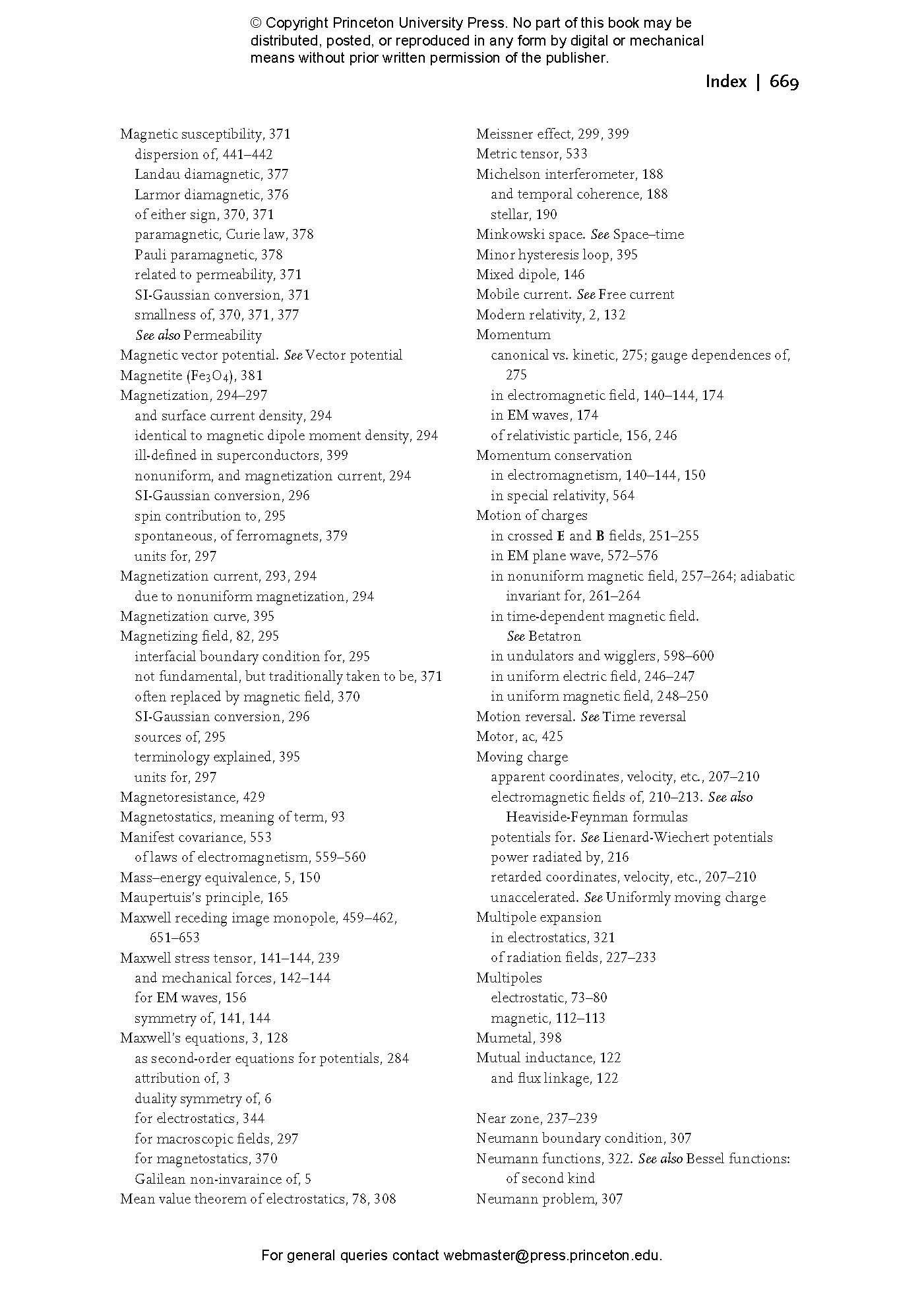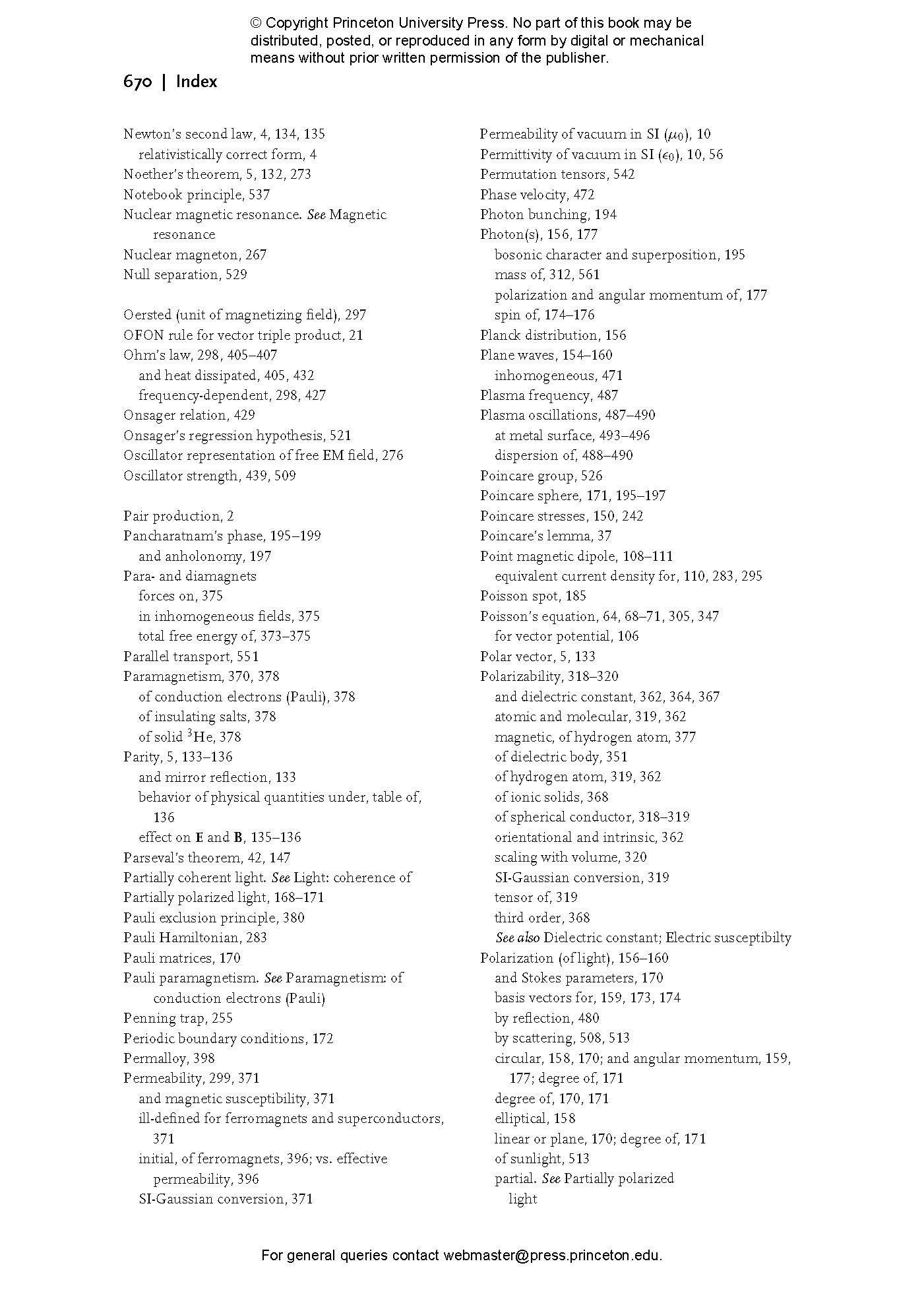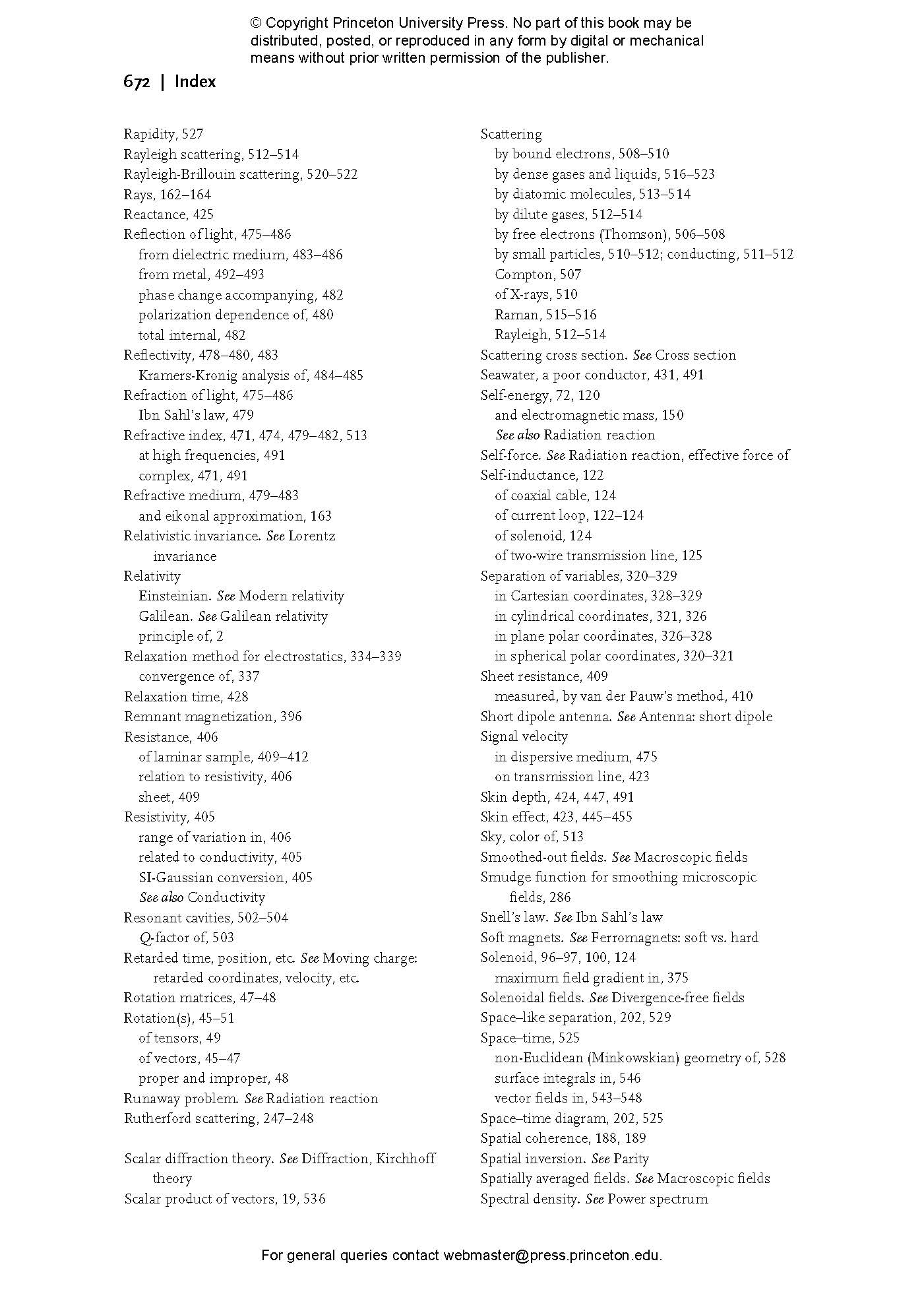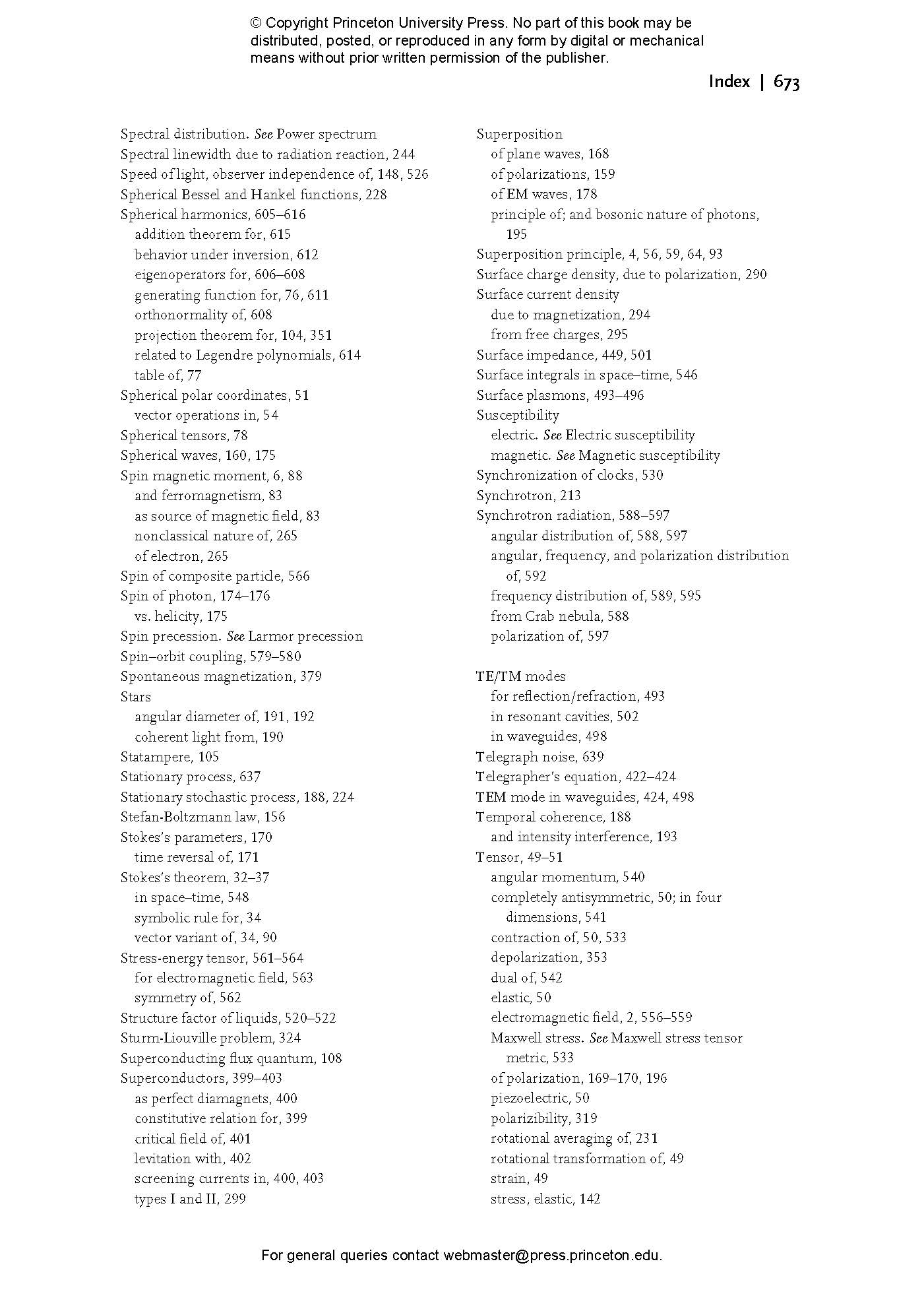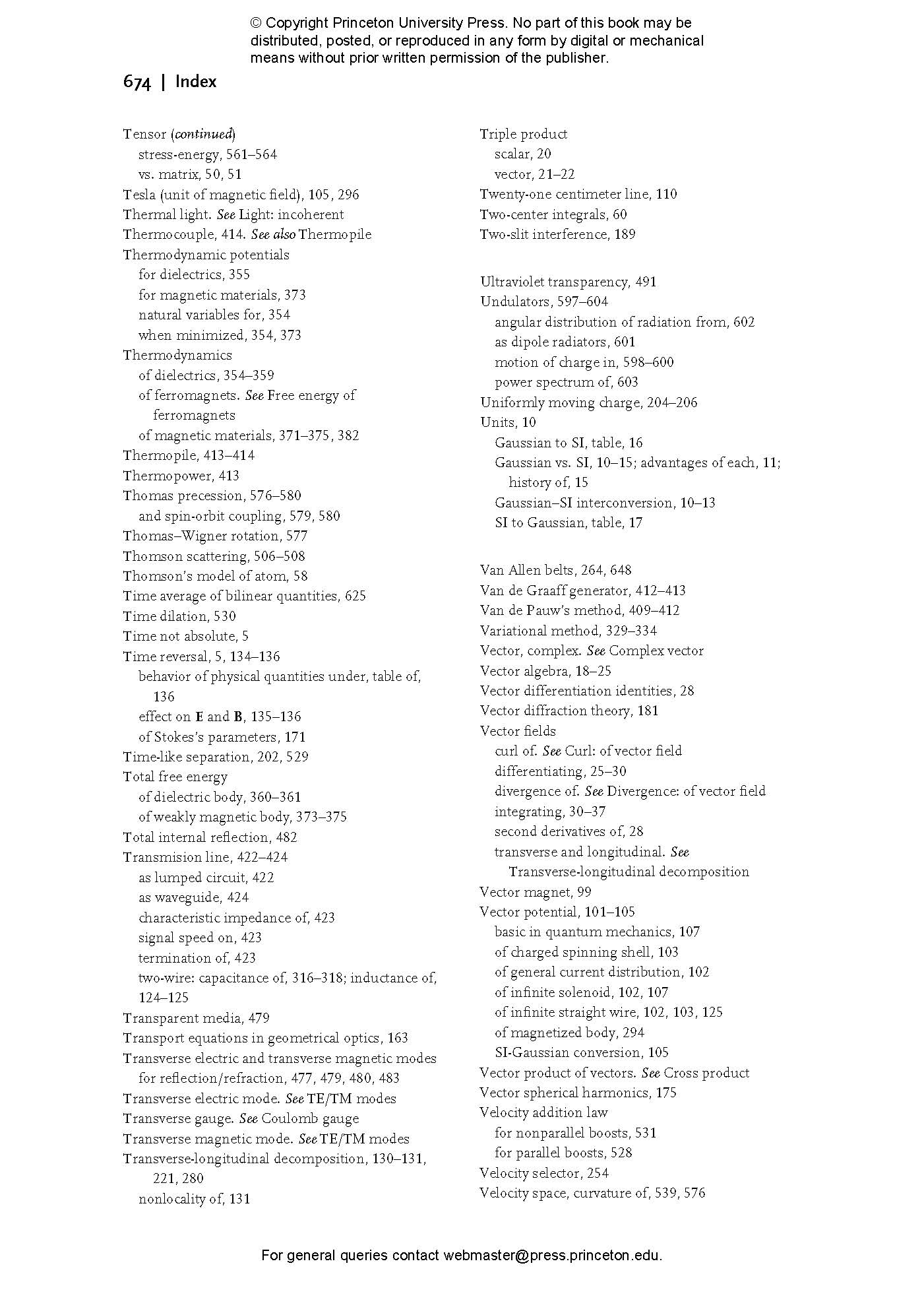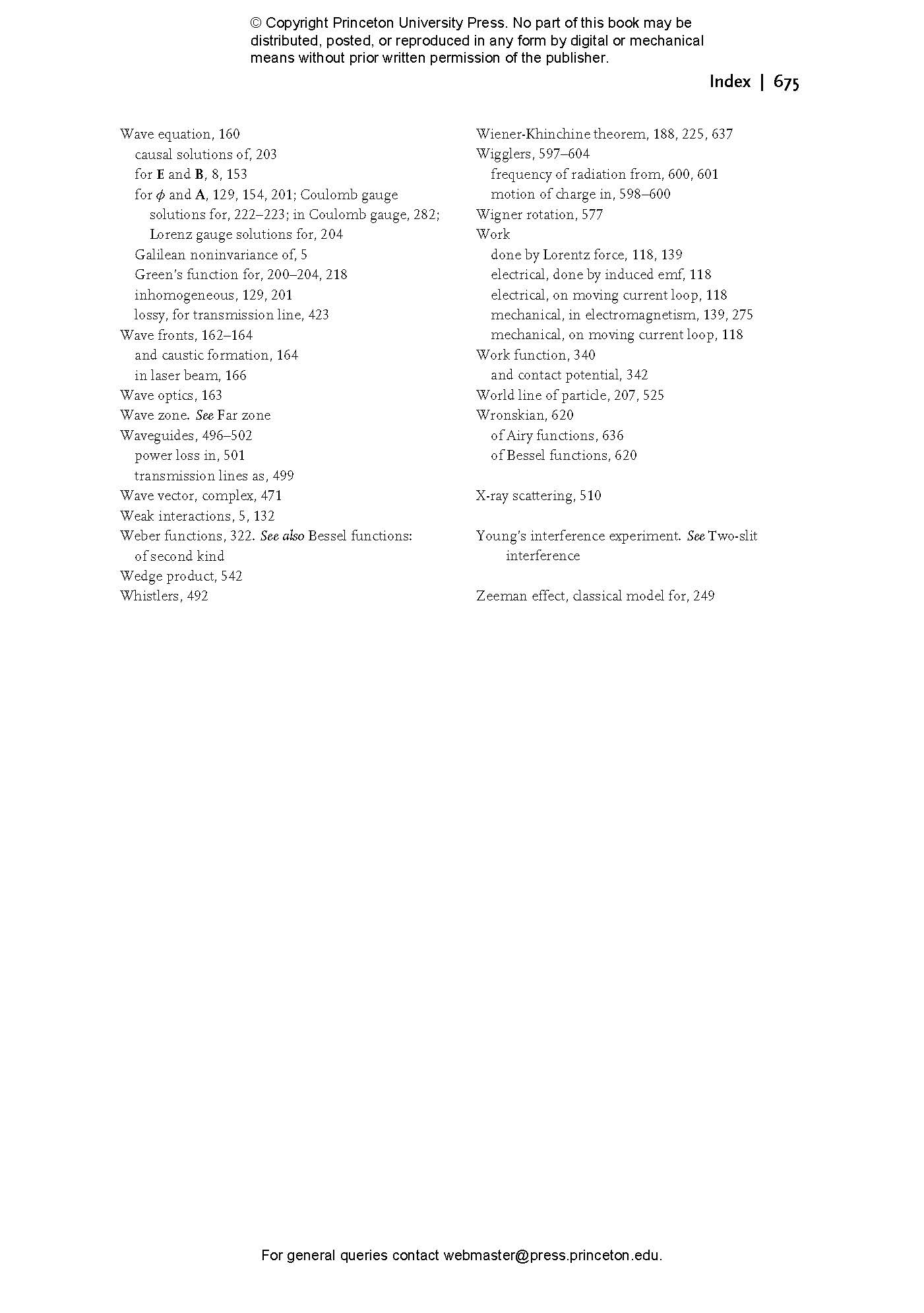This graduate-level physics textbook provides a comprehensive treatment of the basic principles and phenomena of classical electromagnetism. While many electromagnetism texts use the subject to teach mathematical methods of physics, here the emphasis is on the physical ideas themselves. Anupam Garg distinguishes between electromagnetism in vacuum and that in material media, stressing that the core physical questions are different for each. In vacuum, the focus is on the fundamental content of electromagnetic laws, symmetries, conservation laws, and the implications for phenomena such as radiation and light. In material media, the focus is on understanding the response of the media to imposed fields, the attendant constitutive relations, and the phenomena encountered in different types of media such as dielectrics, ferromagnets, and conductors. The text includes applications to many topical subjects, such as magnetic levitation, plasmas, laser beams, and synchrotrons.
Classical Electromagnetism in a Nutshell is ideal for a yearlong graduate course and features more than 300 problems, with solutions to many of the advanced ones. Key formulas are given in both SI and Gaussian units; the book includes a discussion of how to convert between them, making it accessible to adherents of both systems.
- Offers a complete treatment of classical electromagnetism
- Emphasizes physical ideas
- Separates the treatment of electromagnetism in vacuum and material media
- Presents key formulas in both SI and Gaussian units
- Covers applications to other areas of physics
- Includes more than 300 problems
Anupam Garg is professor of physics and astronomy at Northwestern University.
- Preface
- List of symbols
- Suggestions for using this book
- 1 Introduction
- 1 The field concept
- 2 The equations of electrodynamics
- 3 A lightspeed survey of electromagnetic phenomena
- 4 SI versus Gaussian
- 2 Review of mathematical concepts
- 5 Vector algebra
- 6 Derivatives of vector fields
- 7 Integration of vector fields
- 8 The theorems of Stokes and Gauss
- 9 Fourier transforms, delta functions, and distributions
- 10 Rotational transformations of vectors and tensors
- 11 Orthogonal curvilinear coordinates
- 3 Electrostatics in vacuum
- 12 Coulomb’s law
- 13 The electrostatic potential
- 14 Electrostatic energy
- 15 Differential form of Coulomb’s law
- 16 Uniqueness theorem of electrostatics
- 17 Solving Poisson’s equation: a few examples
- 18 Energy in the electric field
- 19 The multipole expansion
- 20 Charge distributions in external fields
- 4 Magnetostatics in vacuum
- 21 Sources of magnetic field
- 22 The law of Biot and Savart
- 23 Differential equations of magnetostatics; Ampere’s law
- 24 The vector potential
- 25 Gauge invariance
- 26 ∇ · B and ∇ × B for a point dipole
- 27 Magnetic multipoles
- 5 Induced electromagnetic fields
- 28 Induction
- 29 Energy in the magnetic field—Feynman’s argument
- 30 Energy in the magnetic field—standard argument
- 31 Inductance
- 32 The Ampere-Maxwell law
- 33 Potentials for time-dependent fields
- 6 Symmetries and conservation laws
- 34 Discrete symmetries of the laws of electromagnetism
- 35 Energy flow and the Poynting vector
- 36 Momentum conservation
- 37 Angular momentum conservation*
- 38 Relativity at low speeds
- 39 Electromagnetic mass*
- 7 Electromagnetic waves
- 40 The wave equation for E and B
- 41 Plane electromagnetic waves
- 42 Monochromatic plane waves and polarization
- 43 Nonplane monochromatic waves; geometrical optics*
- 44 Electromagnetic fields in a laser beam*
- 45 Partially polarized (quasimonochromatic) light*
- 46 Oscillator representation of electromagnetic waves
- 47 Angular momentum of the free electromagnetic field*
- 8 Interference phenomena
- 48 Interference and diffraction
- 49 Fresnel diffraction
- 50 Fraunhofer diffraction
- 51 Partially coherent light
- 52 The Hanbury-Brown and Twiss effect; intensity interferometry*
- 53 The Pancharatnam phase*
- 9 The electromagnetic field of moving charges
- 54 Green’s function for the wave equation
- 55 Fields of a uniformly moving charge
- 56 Potentials of an arbitrarily moving charge—the Lienard-Wiechert solutions
- 57 Electromagnetic fields of an arbitrarily moving charge
- 58 Radiation from accelerated charges: qualitative discussion
- 10 Radiation from localized sources
- 59 General frequency-domain formulas for fields
- 60 Far-zone fields
- 61 Power radiated
- 62 The long-wavelength electric dipole approximation
- 63 Higher multipoles*
- 64 Antennas
- 65 Near-zone fields
- 66 Angular momentum radiated*
- 67 Radiation reaction
- 11 Motion of charges and moments in external fields
- 68 The Lorentz force law
- 69 Motion in a static uniform electric field
- 70 Motion in a static uniform magnetic field
- 71 Motion in crossed E and B fields; E < B
- 72 Motion in a time-dependent magnetic field; the betatron
- 73 Motion in a quasiuniform static magnetic field—guiding center drift*
- 74 Motion in a slowly varying magnetic field—the first adiabatic invariant*
- 75 The classical gyromagnetic ratio and Larmor’s theorem
- 76 Precession of moments in time-dependent magnetic fields*
- 12 Action formulation of electromagnetism
- 77 Charged particle in given field
- 78 The free field
- 79 The interacting system of fields and charges
- 80 Gauge invariance and charge conservation
- 13 Electromagnetic fields in material media
- 81 Macroscopic fields
- 82 The macroscopic charge density and the polarization
- 83 The macroscopic current density and the magnetization
- 84 Constitutive relations
- 85 Energy conservation
- 14 Electrostatics around conductors
- 86 Electric fields inside conductors, and at conductor surfaces
- 87 Theorems for electrostatic fields
- 88 Electrostatic energy with conductors; capacitance
- 89 The method of images
- 90 Separation of variables and expansions in basis sets
- 91 The variational method*
- 92 The relaxation method
- 93 Microscopic electrostatic field at metal surfaces; work function and contact potential*
- 15 Electrostatics of dielectrics
- 94 The dielectric constant
- 95 Boundary value problems for linear isotropic dielectrics
- 96 Depolarization
- 97 Thermodynamic potentials for dielectrics
- 98 Force on small dielectric bodies
- 99 Models of the dielectric constant
- 16 Magnetostatics in matter
- 100 Magnetic permeability and susceptibility
- 101 Thermodynamic relations for magnetic materials
- 102 Diamagnetism
- 103 Paramagnetism
- 104 The exchange interaction; ferromagnetism
- 105 Free energy of ferromagnets
- 106 Ferromagnetic domain walls*
- 107 Hysteresis in ferromagnets
- 108 Demagnetization
- 109 Superconductors*
- 17 Ohm’s law, emf, and electrical circuits
- 110 Ohm’s law
- 111 Electric fields around current-carrying conductors—a solvable example*
- 112 van der Pauw’s method*
- 113 The Van de Graaff generator
- 114 The thermopile
- 115 The battery
- 116 Lumped circuits
- 117 The telegrapher’s equation*
- 118 The ac generator
- 18 Frequency-dependent response of materials
- 119 The frequency-dependent conductivity
- 120 The dielectric function and electric propensity
- 121 General properties of the ac conductivity*
- 122 Electromagnetic energy in material media*
- 123 Drude-Lorentz model of the dielectric response
- 124 Frequency dependence of the magnetic response*
- 19 Quasistatic phenomena in conductors
- 125 Quasistatic fields
- 126 Variable magnetic field: eddy currents and the skin effect in a planar geometry
- 127 Variable magnetic field: eddy currents and the skin effect in finite bodies*
- 128 Variable electric field, electrostatic regime
- 129 Variable electric field, skin-effect regime
- 130 Eddy currents in thin sheets, Maxwell’s receding image construction, and maglev*
- 131 Motion of extended conductors in magnetic fields*
- 132 The dynamo*
- 20 Electromagnetic waves in insulators
- 133 General properties of EM waves in media
- 134 Wave propagation velocities
- 135 Reflection and refraction at a flat interface (general case)
- 136 More reflection and refraction (both media transparent and nonmagnetic)
- 137 Reflection from a nonmagnetic opaque medium*
- 21 Electromagnetic waves in and near conductors
- 138 Plasma oscillations
- 139 Dispersion of plasma waves*
- 140 Transverse EM waves in conductors
- 141 Reflection of light from a metal
- 142 Surface plasmons*
- 143 Waveguides
- 144 Resonant cavities
- 22 Scattering of electromagnetic radiation
- 145 Scattering terminology
- 146 Scattering by free electrons
- 147 Scattering by bound electrons
- 148 Scattering by small particles
- 149 Scattering by dilute gases, and why the sky is blue
- 150 Raman scattering
- 151 Scattering by liquids and dense gases*
- 23 Formalism of special relativity
- 152 Review of basic concepts
- 153 Four-vectors
- 154 Velocity, momentum, and acceleration four-vectors
- 155 Four-tensors
- 156 Vector fields and their derivatives in space–time
- 157 Integration of vector fields*
- 158 Accelerated observers*
- 24 Special relativity and electromagnetism
- 159 Four-current and charge conservation
- 160 The four-potential
- 161 The electromagnetic field tensor
- 162 Covariant form of the laws of electromagnetism
- 163 The stress–energy tensor
- 164 Energy–momentum conservation in special relativity
- 165 Angular momentum and spin*
- 166 Observer-dependent properties of light
- 167 Motion of charge in an electromagnetic plane wave*
- 168 Thomas precession*
- 25 Radiation from relativistic sources
- 169 Total power radiated
- 170 Angular distribution of power
- 171 Synchrotron radiation—qualitative discussion
- 172 Full spectral, angular, and polarization distribution of synchrotron radiation*
- 173 Spectral distribution of synchrotron radiation*
- 174 Angular distribution and polarization of synchrotron radiation*
- 175 Undulators and wigglers*
- Appendix A: Spherical harmonics
- Appendix B: Bessel functions
- Appendix C: Time averages of bilinear quantities in electrodynamics
- Appendix D: Caustics
- Appendix E: Airy functions
- Appendix F: Power spectrum of a random function
- Appendix G: Motion in the earth’s magnetic field—the Stormer problem
- Appendix H: Alternative proof of Maxwell’s receding image construction
- Bibliography
- Index
"This is a very comprehensive book on classical electromagnetism covering historical introductions, detailed theoretical derivations with additional mathematical clarifications whenever necessary, practical applications, and numerous exercises and examples for teachers and students in this subject. It can certainly be a useful text-book for students as well as a good reference book for professionals in various fields of electromagnetism."—Vladimir Cadez, Zentralblatt MATH
"This text provides a fresh, modern look at electrodynamics. It is comprehensive, chock full of interesting insights and anecdotes, and written with a clear enthusiasm."—Kenneth A. Intriligator, University of California, San Diego
"Garg displays considerable wisdom and courage in writing a long-overdue, modern treatment of electromagnetism. I wish I had this book when I was a student. It contains delightful morsels of deep insight (the introduction taught me that fields are as real as a rhinoceros, or as I might extend it, 'quantum fields are as real as quantum rhinos') and interesting topics that are rarely, if ever, treated in other texts."—A. Zee, author of Quantum Field Theory in a Nutshell
"Garg demonstrates that while the mathematical beauty of his subject is deserving of the attention it gets, the physical implications are even more seductive. This book is a treasure trove of thoughtful and incisive nuggets. I expect to see it on the shelves of many students and professors the world over."—R. Shankar, Yale University
"An outstanding text. It offers delightful insights into the physics of electromagnetism rather than treating this subject as an excuse for laborious exercises in mathematical methods. It has the best treatment of electromagnetism in material media that I know. Remarkably lucid and enjoyable, and a worthy competitor to Jackson's classic text."—Jainendra Jain, Pennsylvania State University
"Classical Electromagnetism in a Nutshell is an interesting and elegant book, and an excellent text for a graduate-level course on the subject. Garg has a lively, modern writing style that will engage today's graduate students."—John D. Stack, University of Illinois, Urbana-Champaign
"Garg's textbook is truly excellent. It goes the extra mile to provide physical insight in ways that will enhance students' understanding, and includes rarely seen topics as well. I want to compliment the author on the obvious care and expertise with which he assembled this text. If I were to teach a yearlong graduate-level electromagnetism course, I would use this book."—John W. Belcher, Massachusetts Institute of Technology
